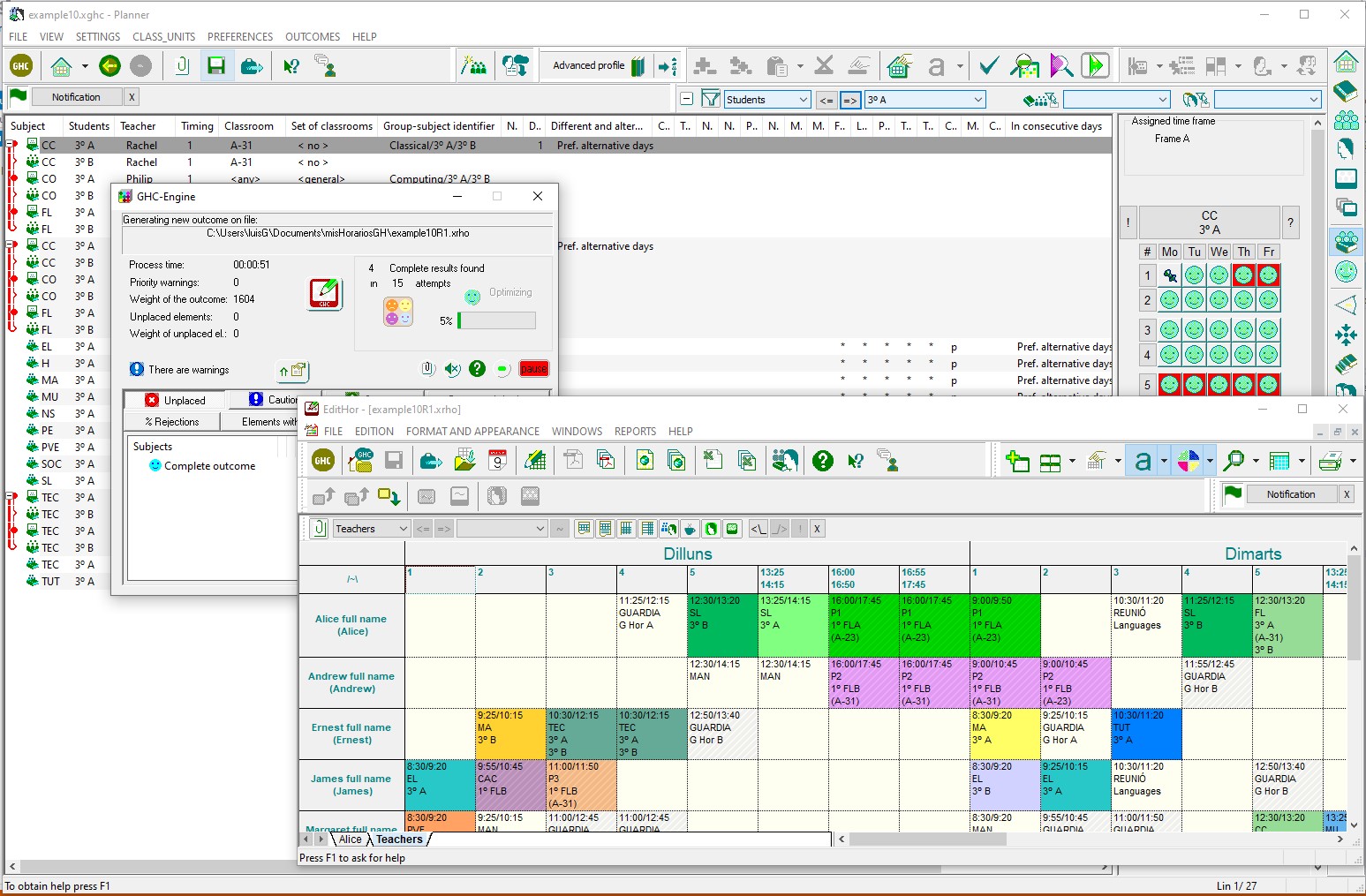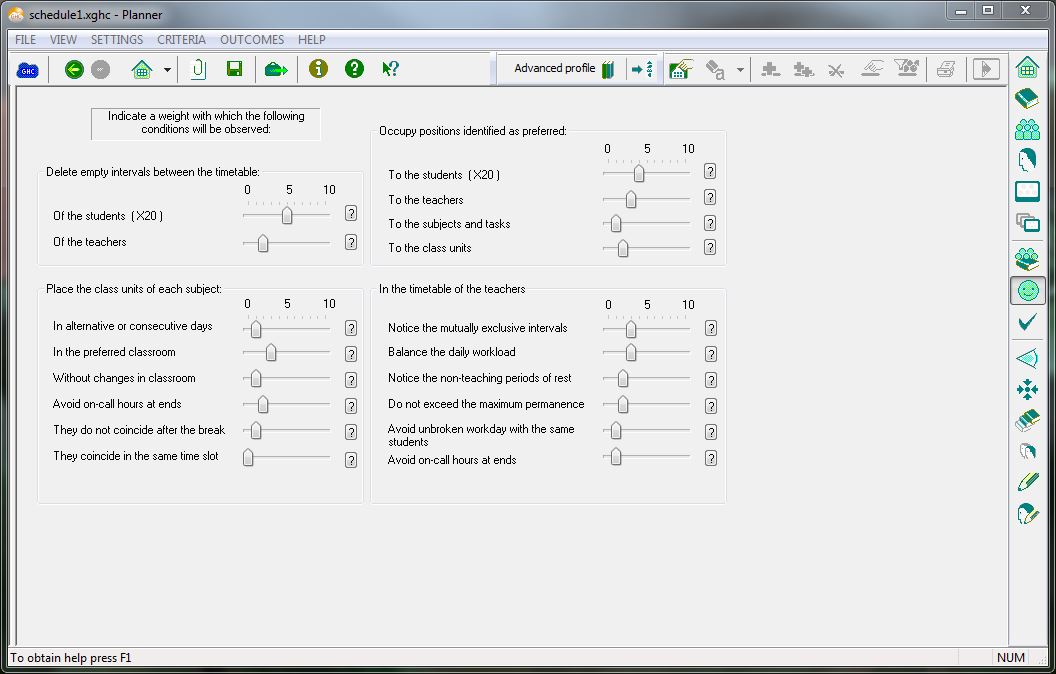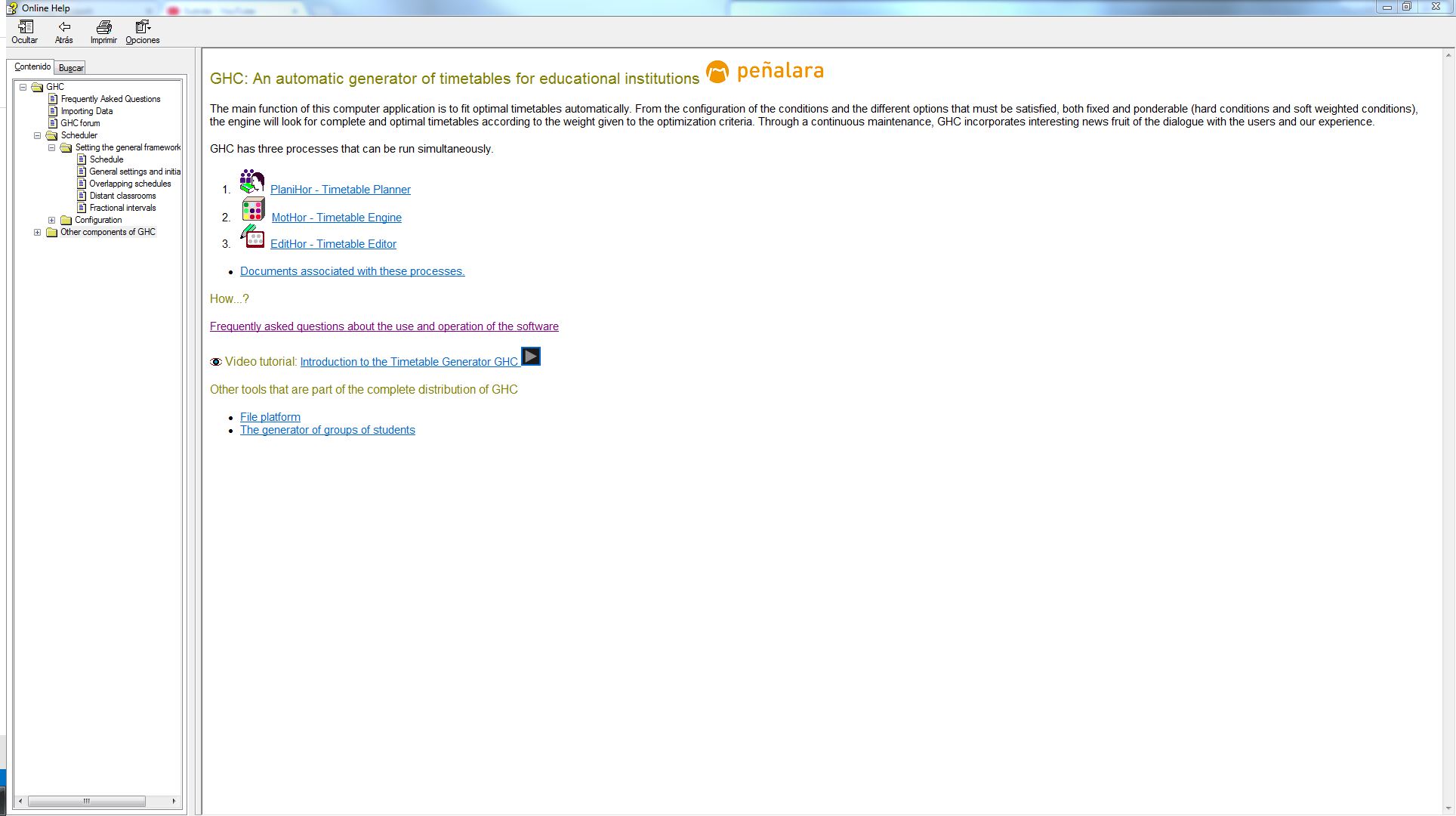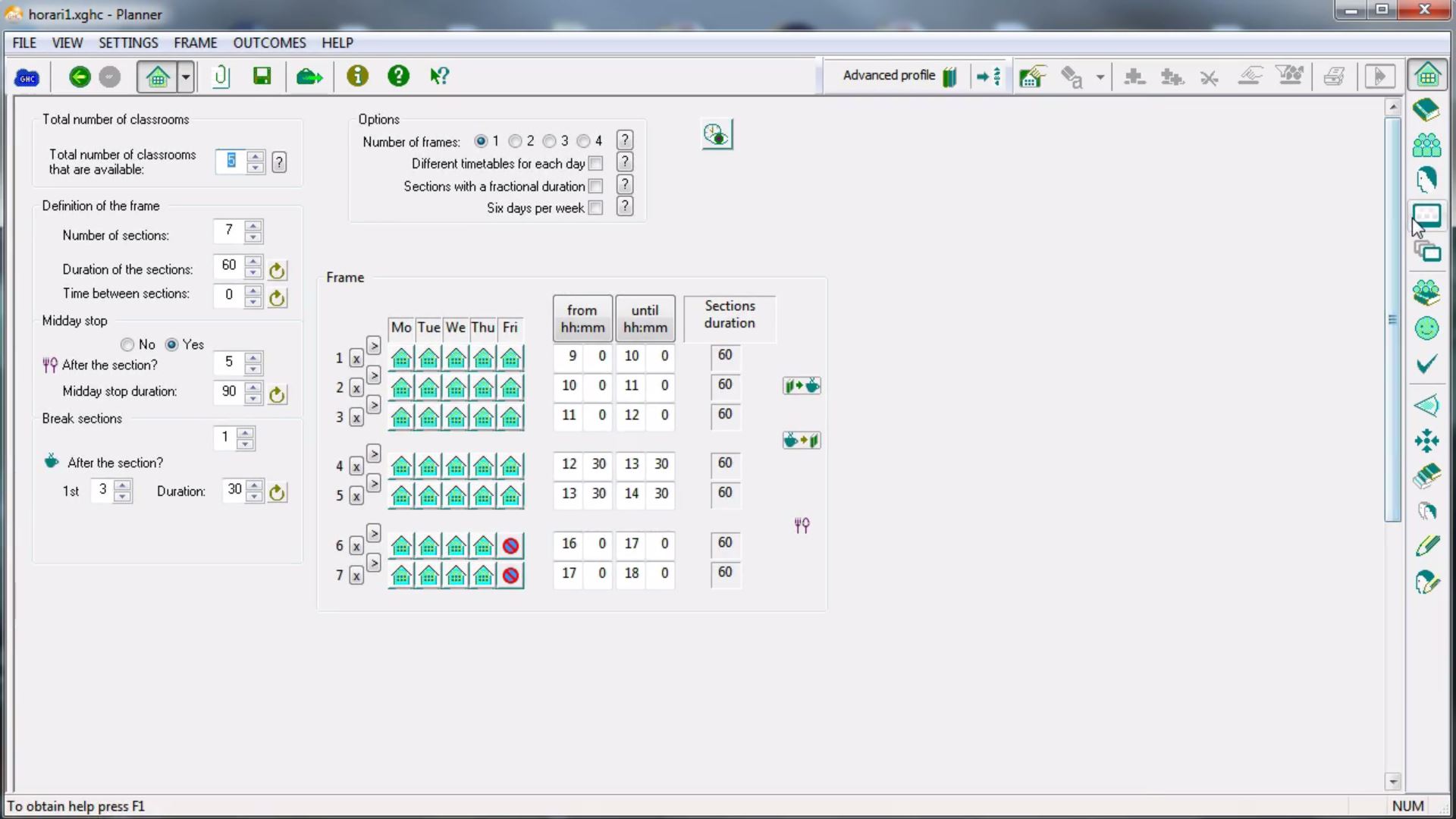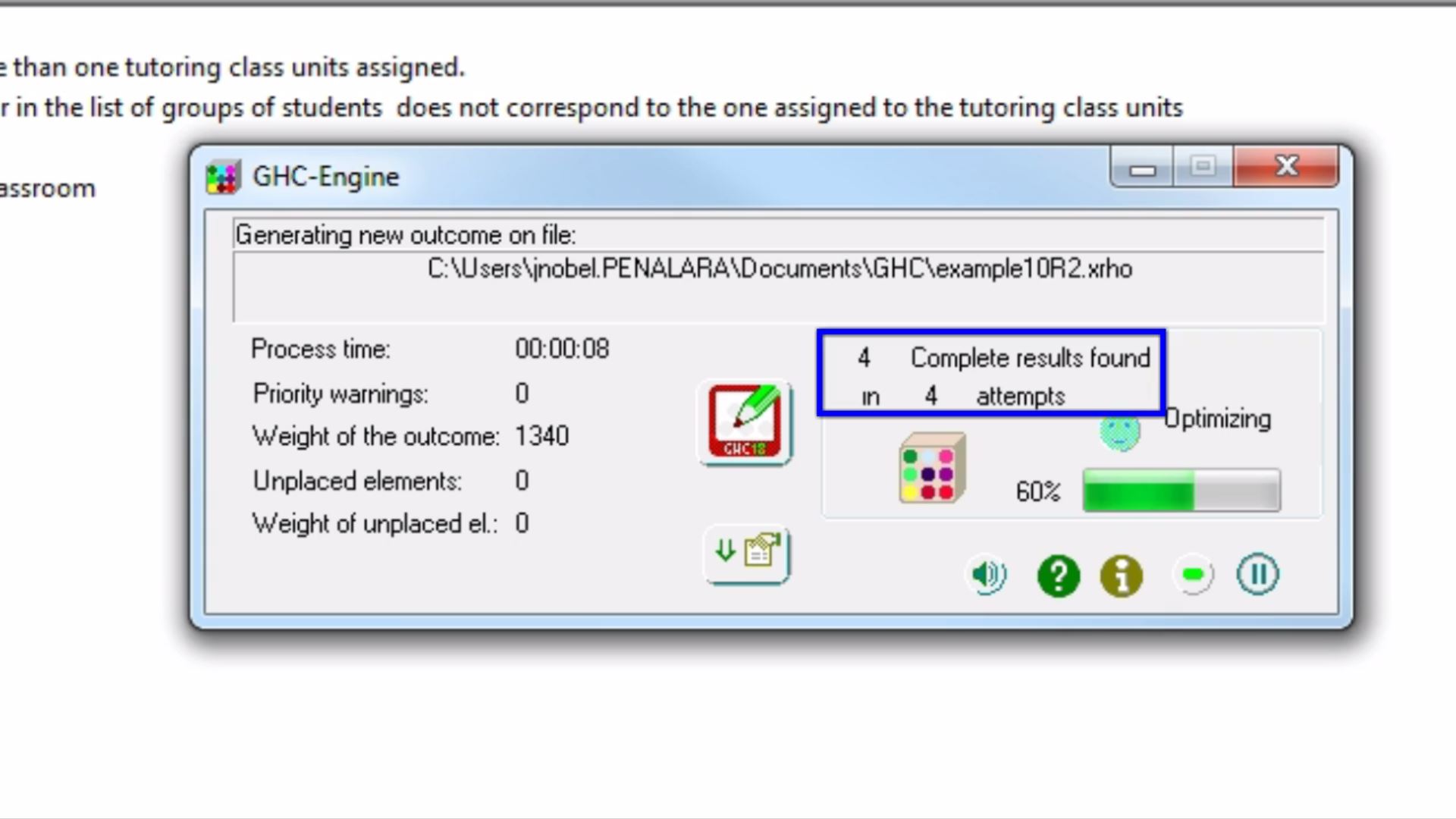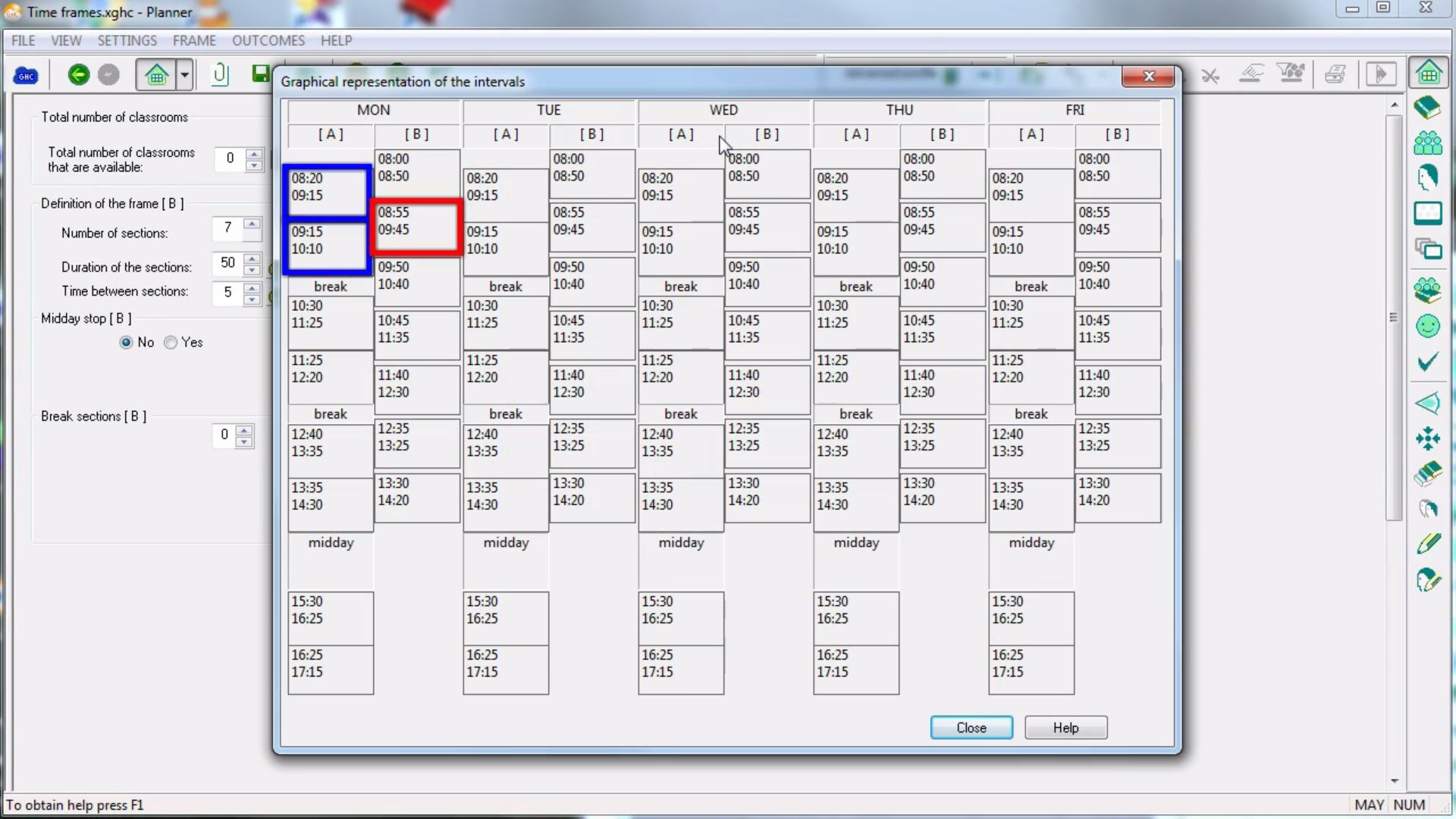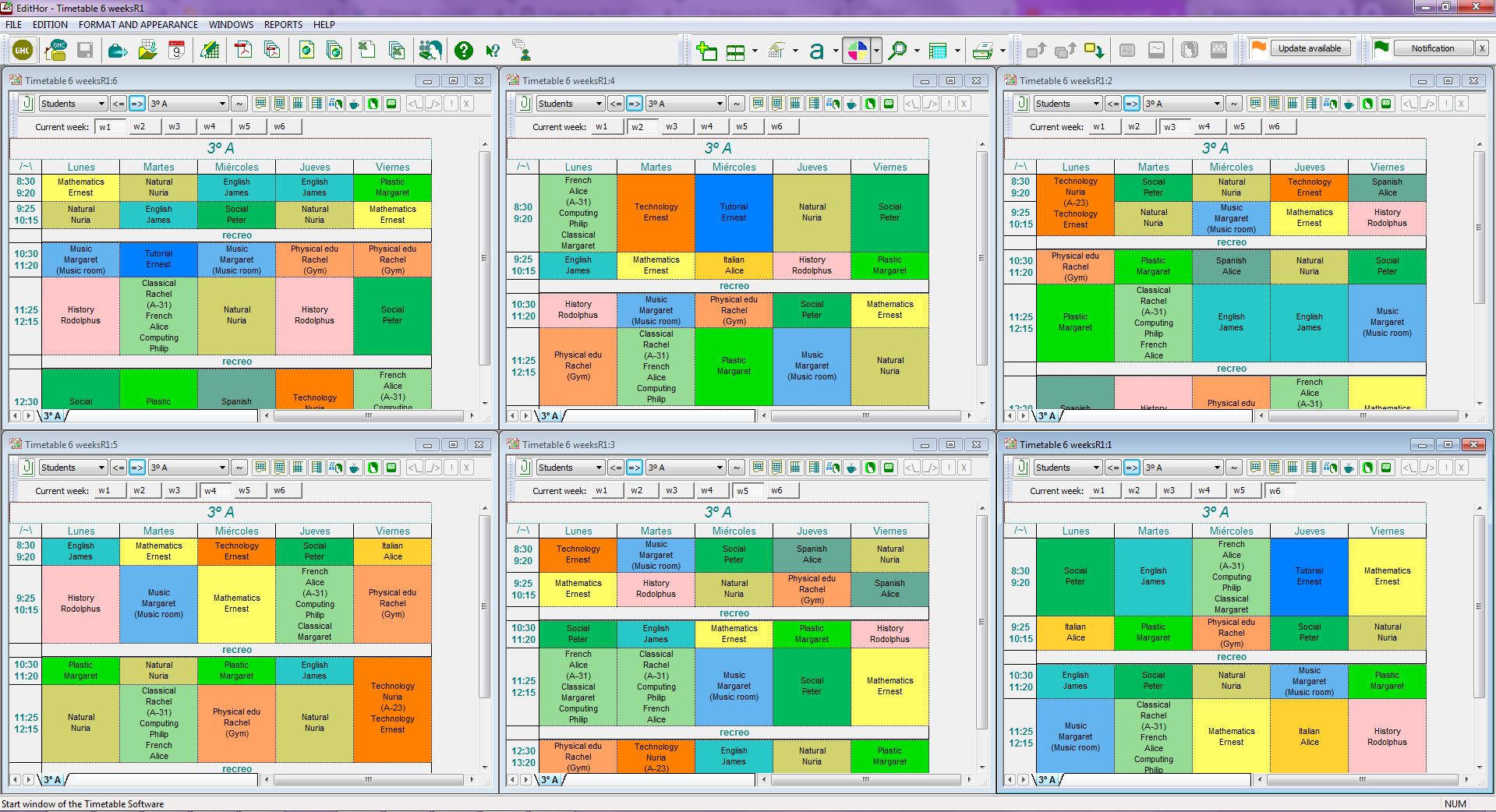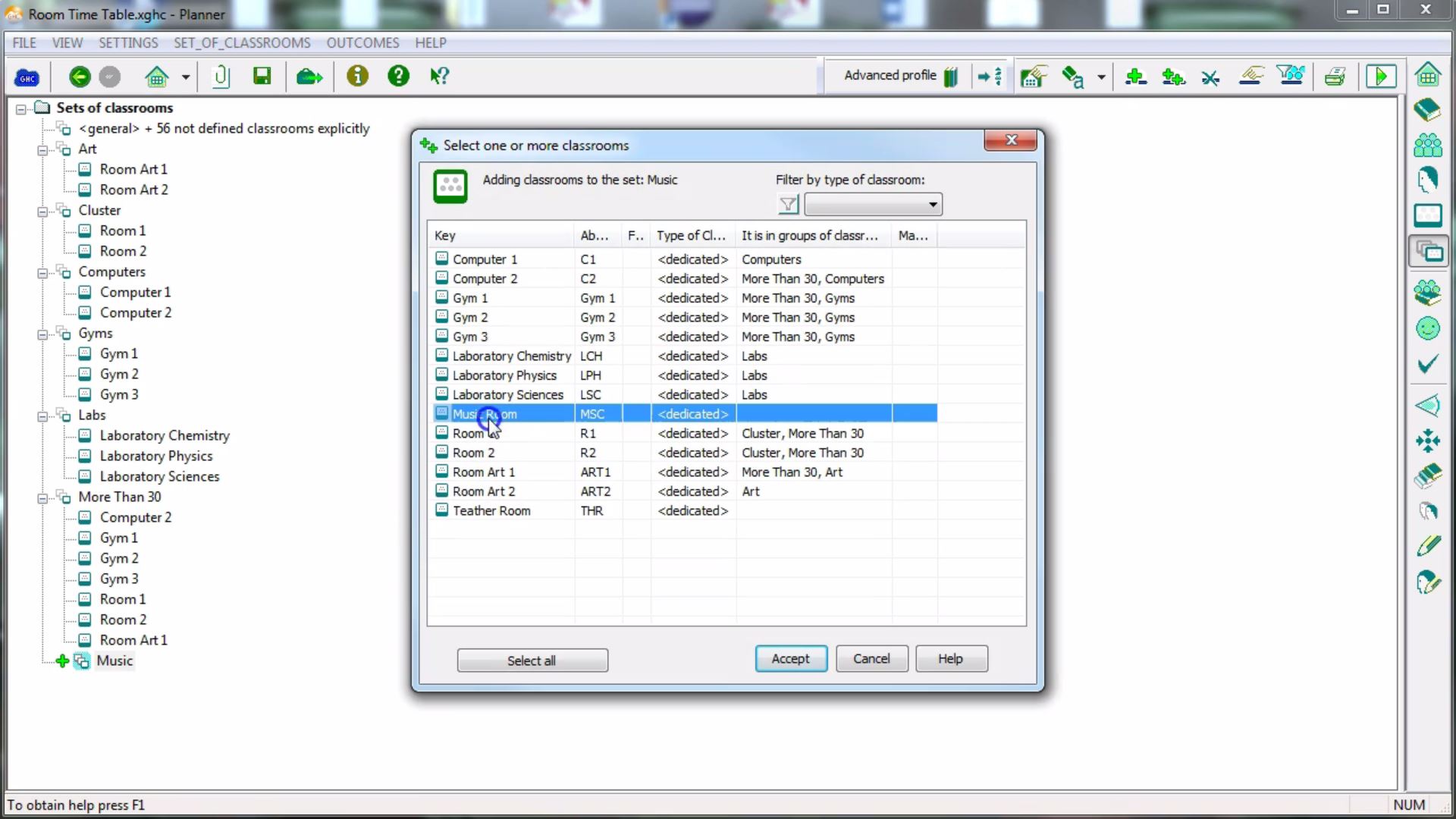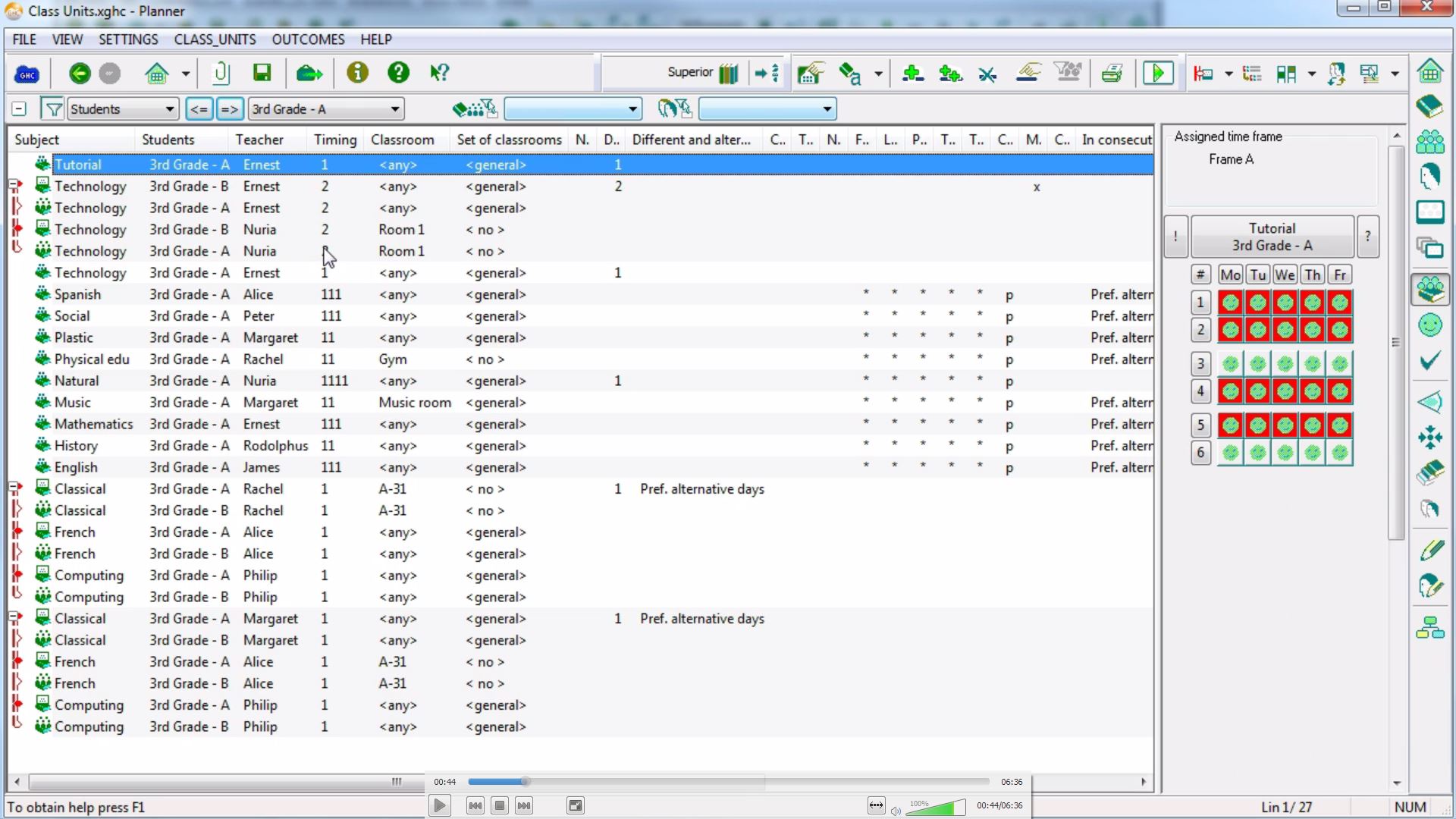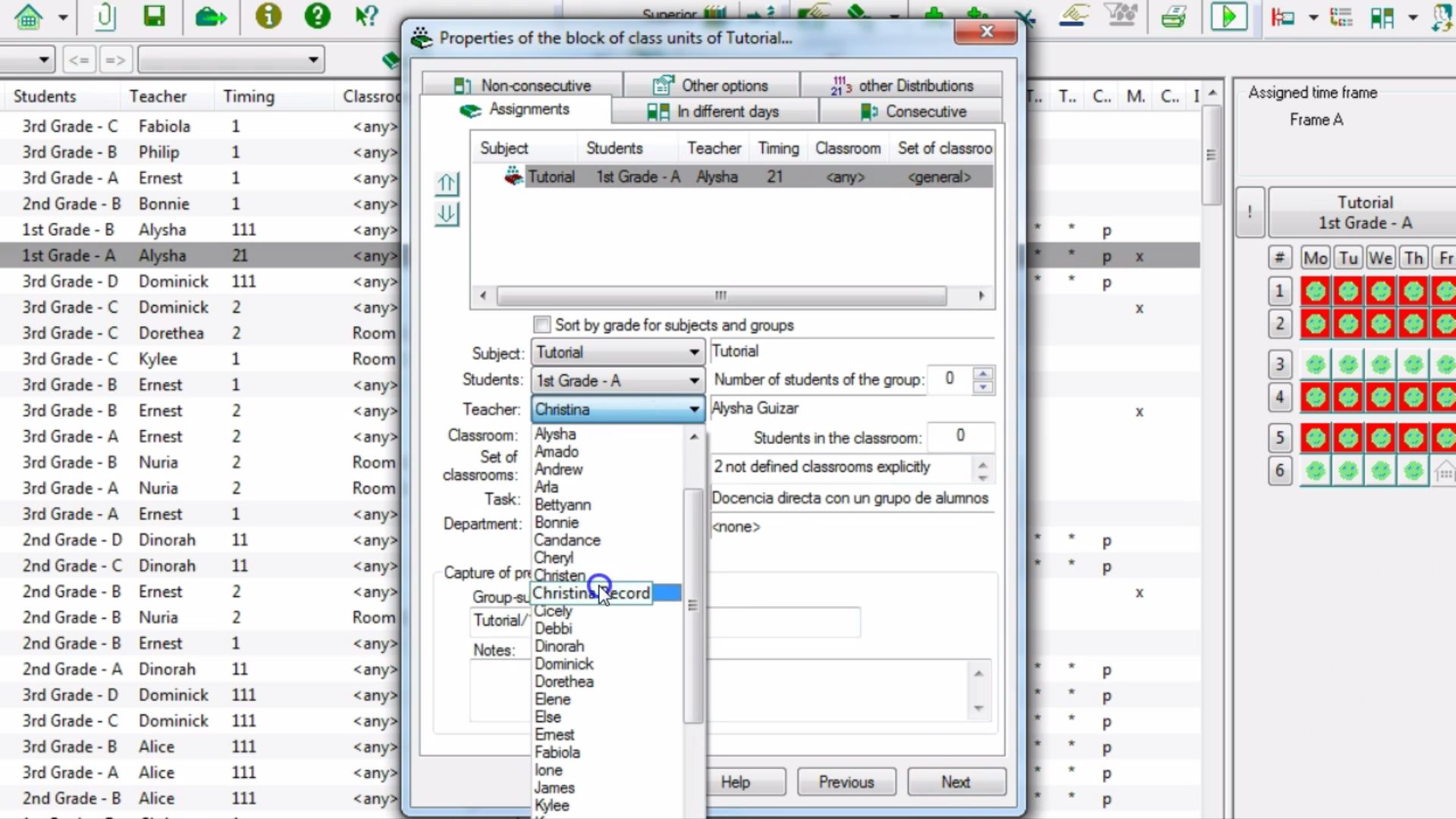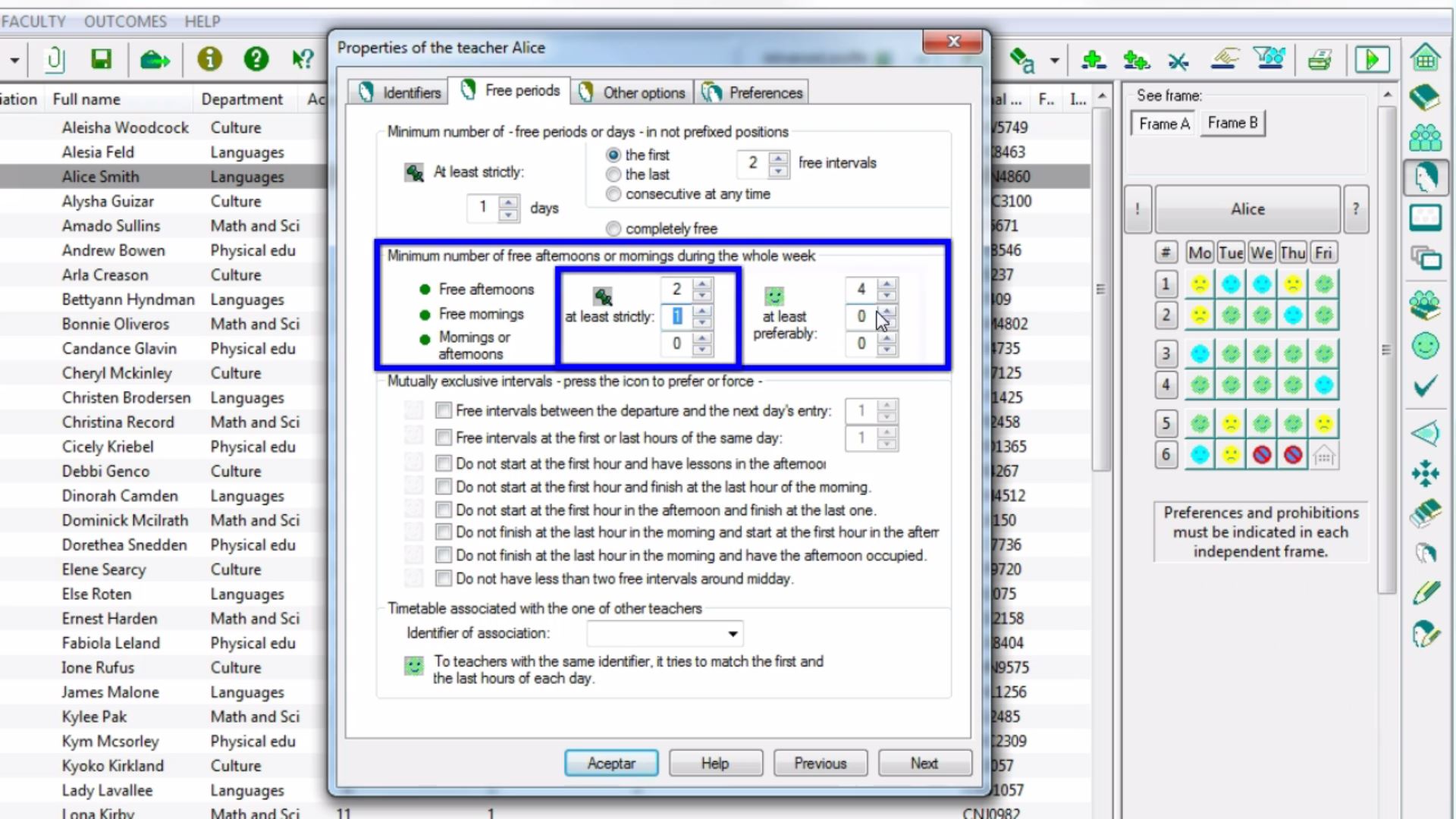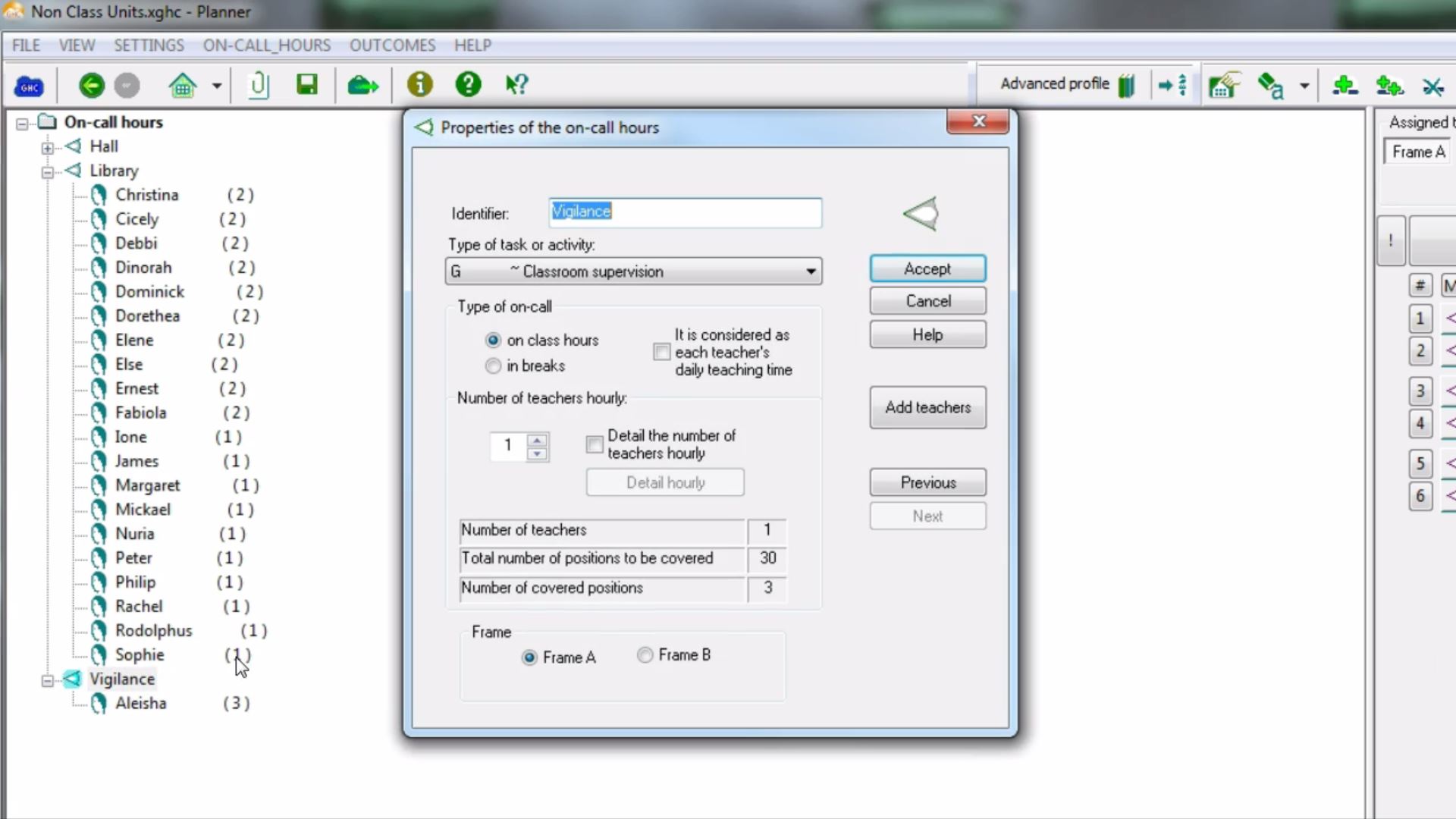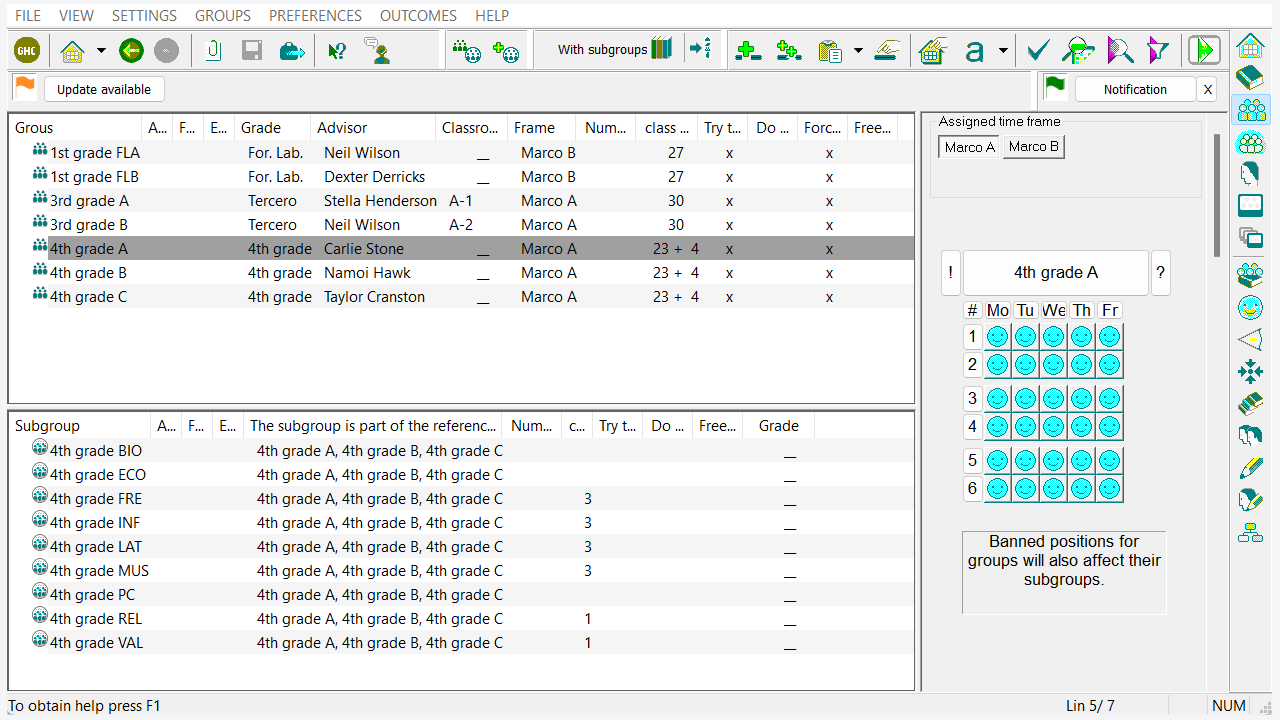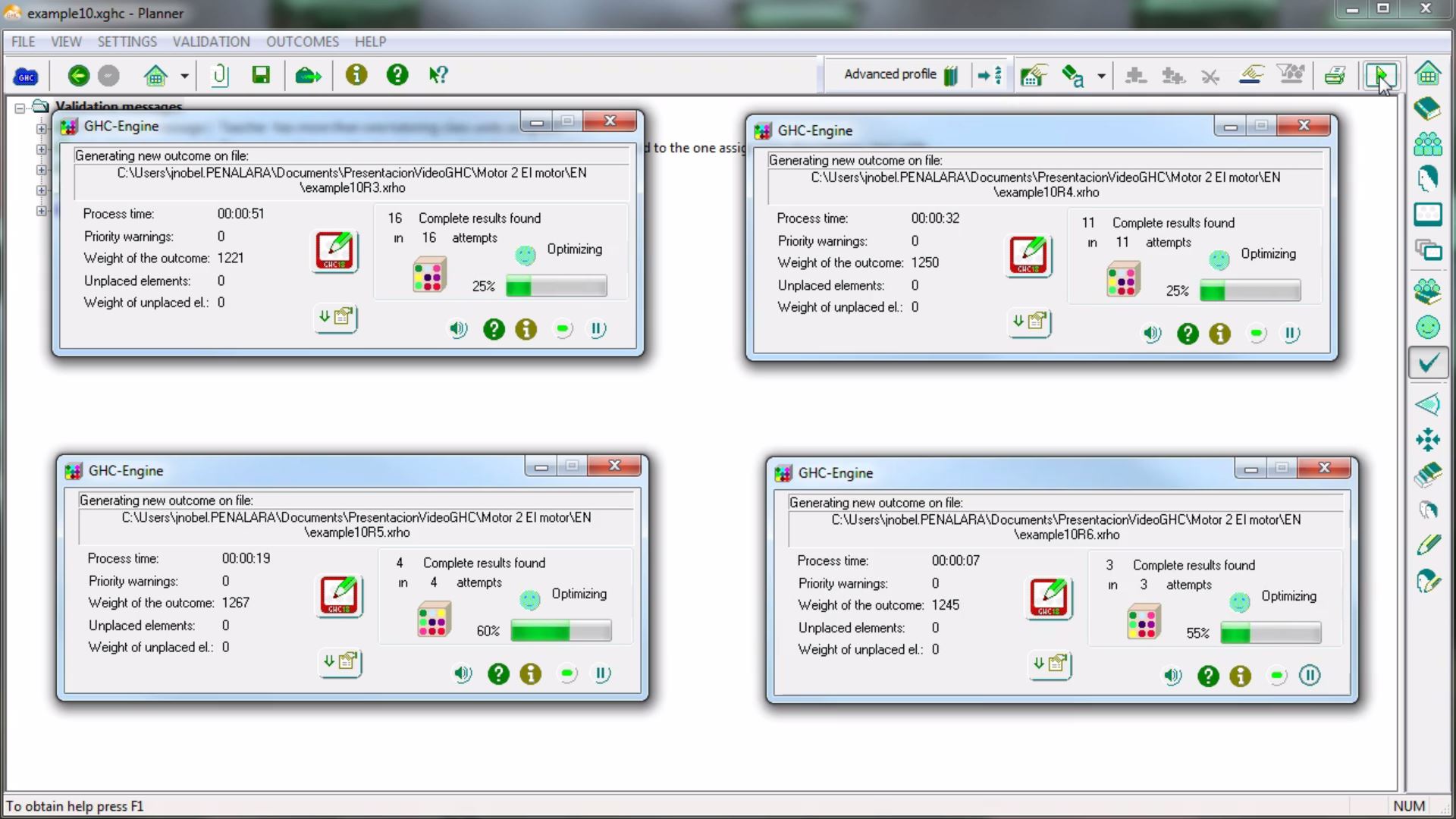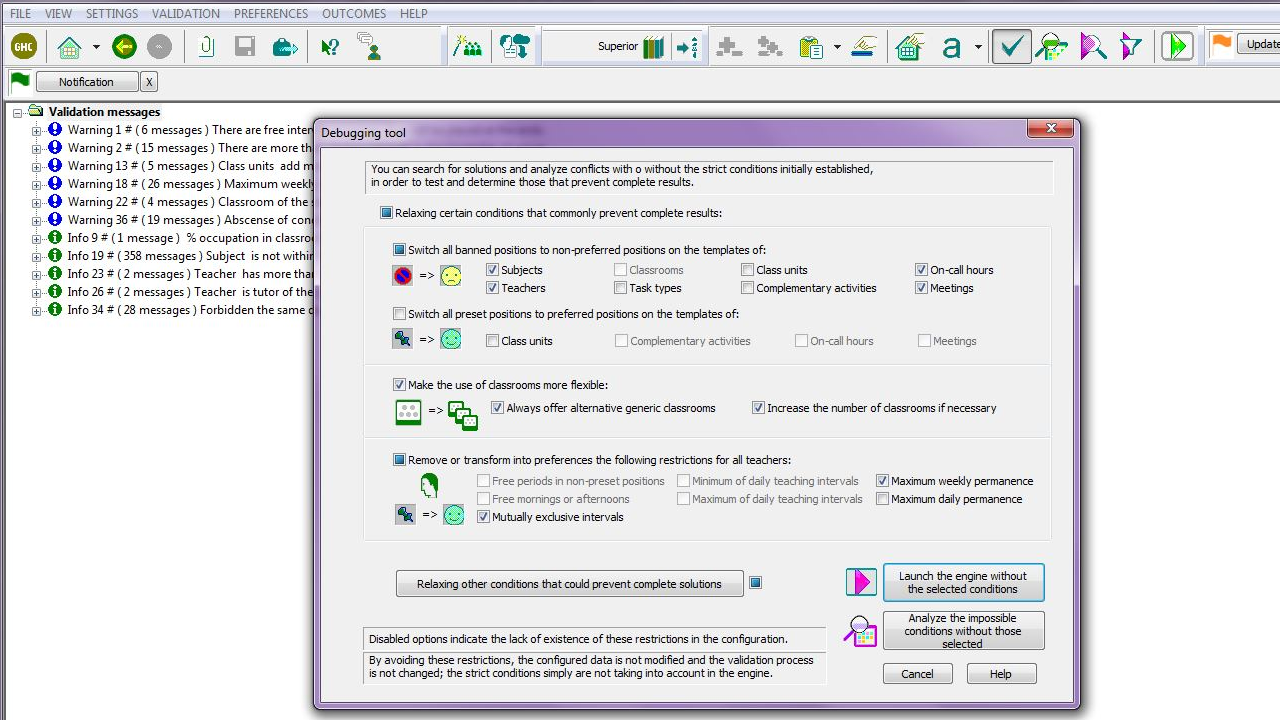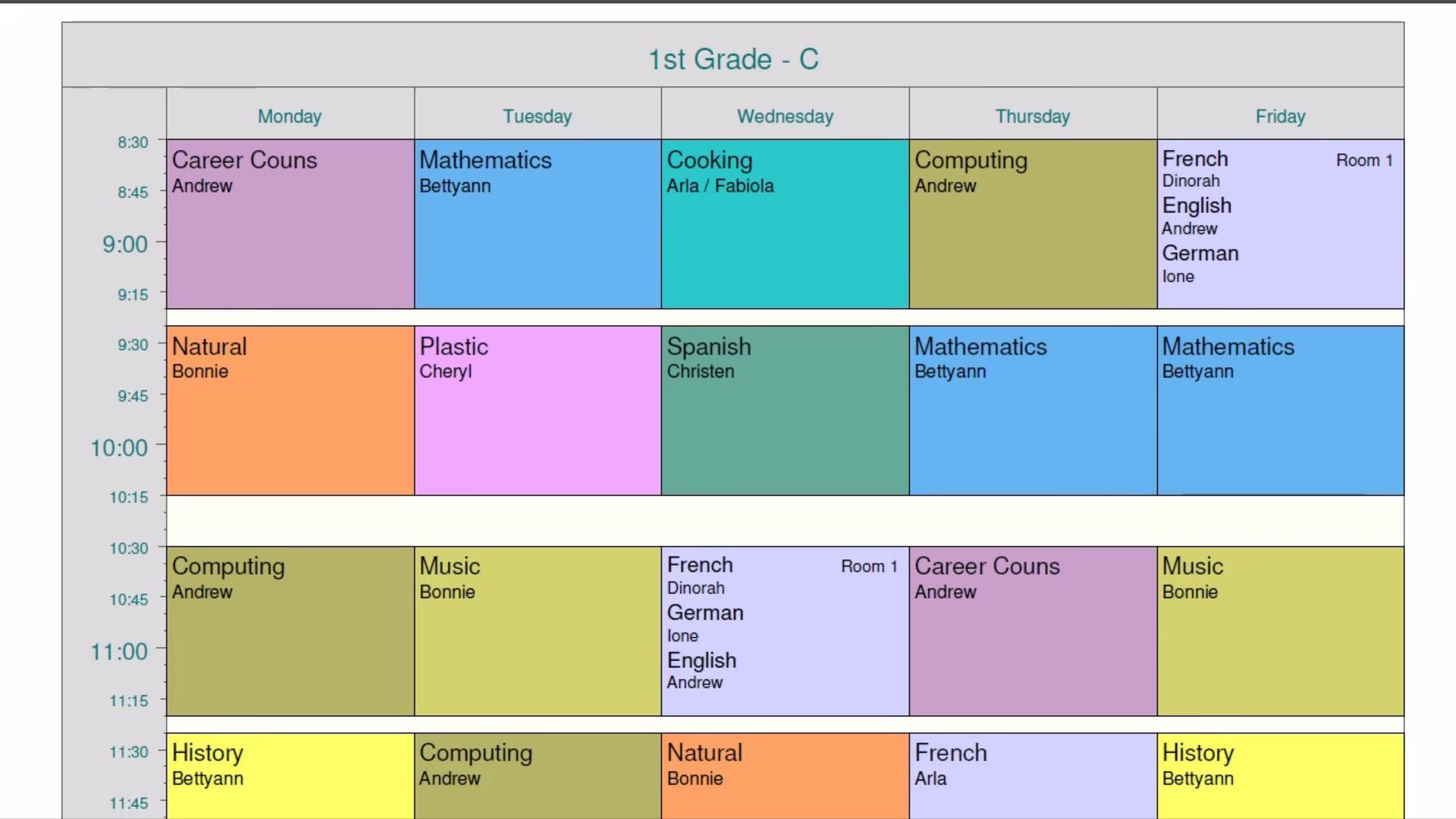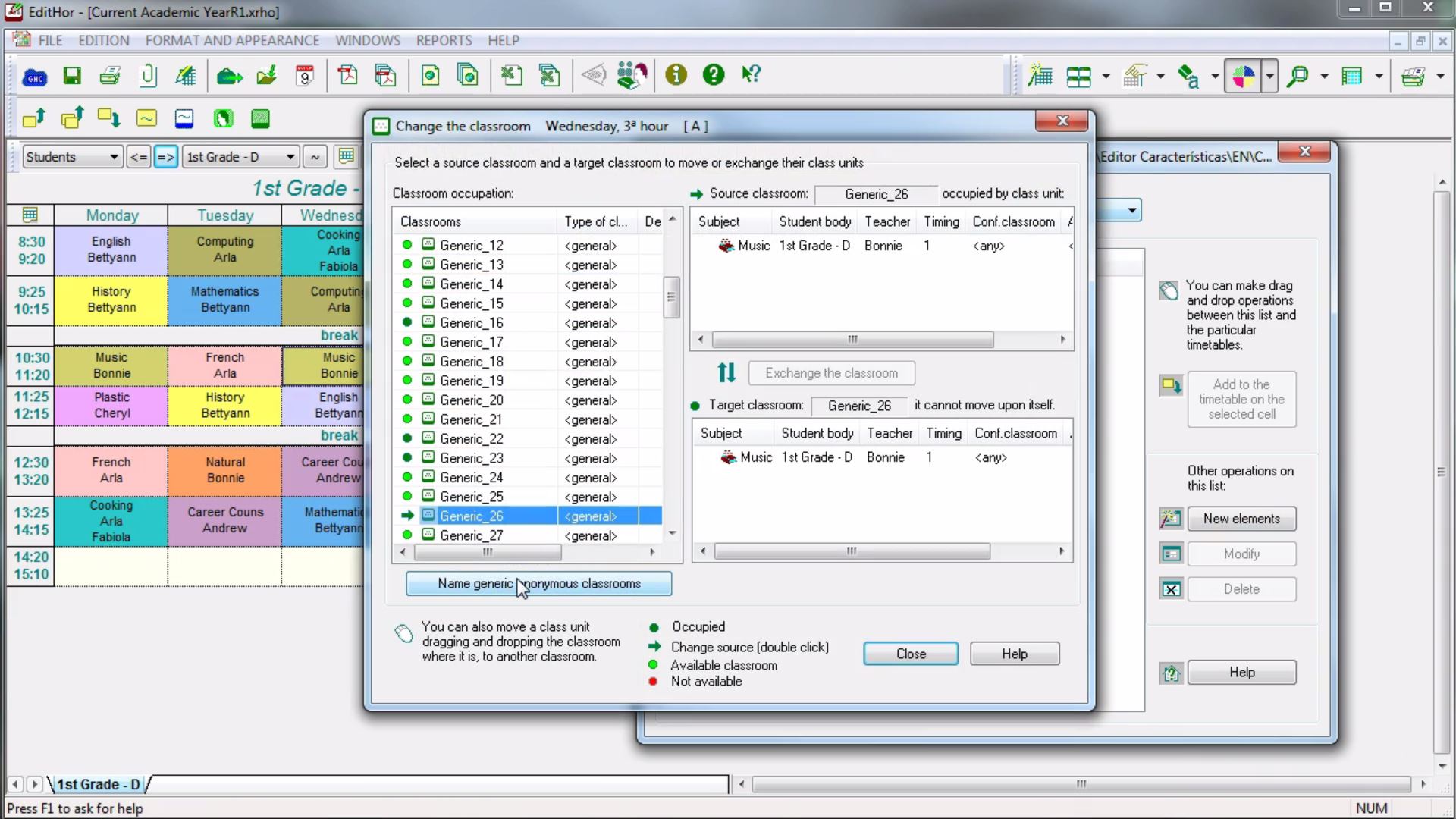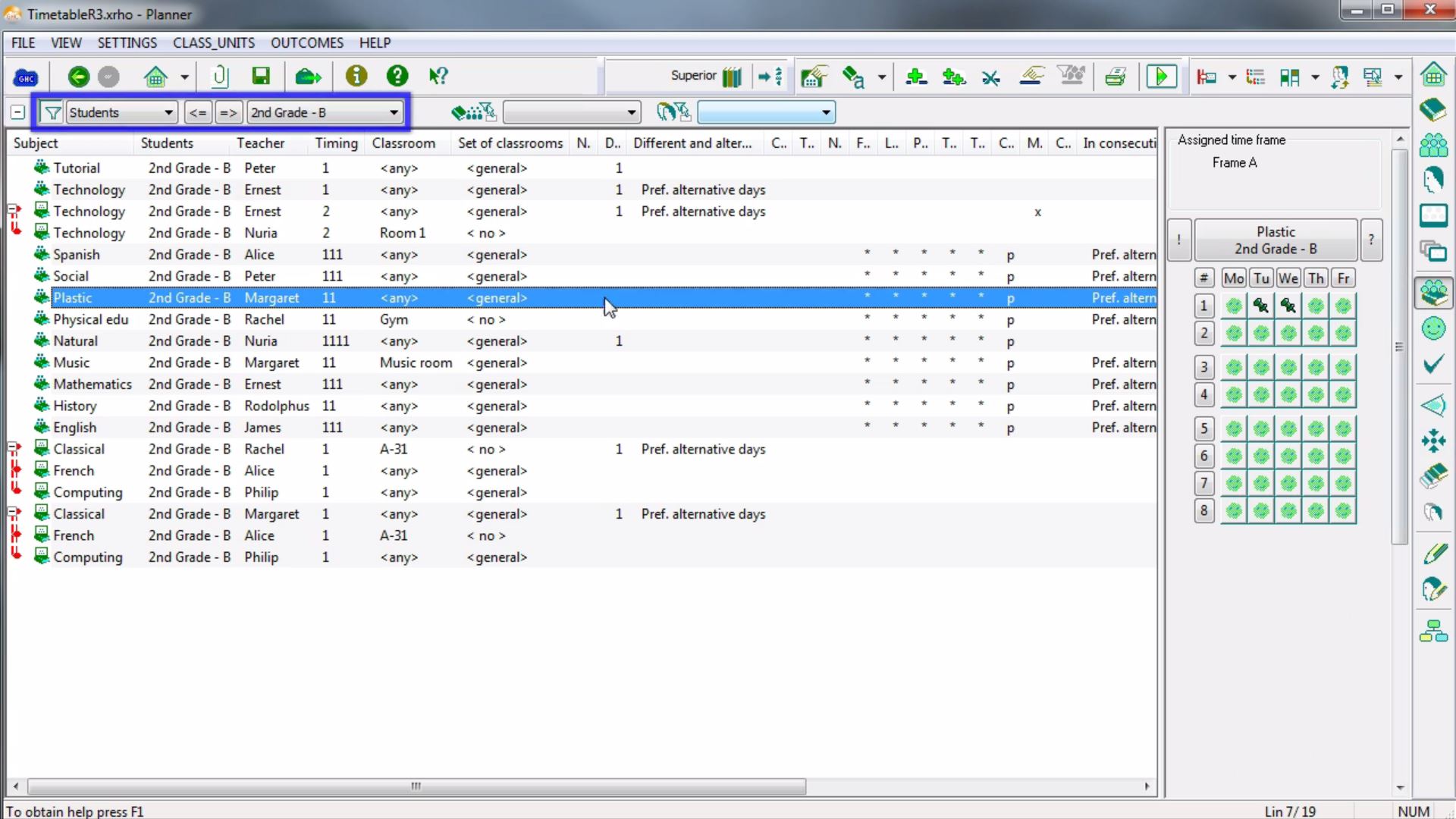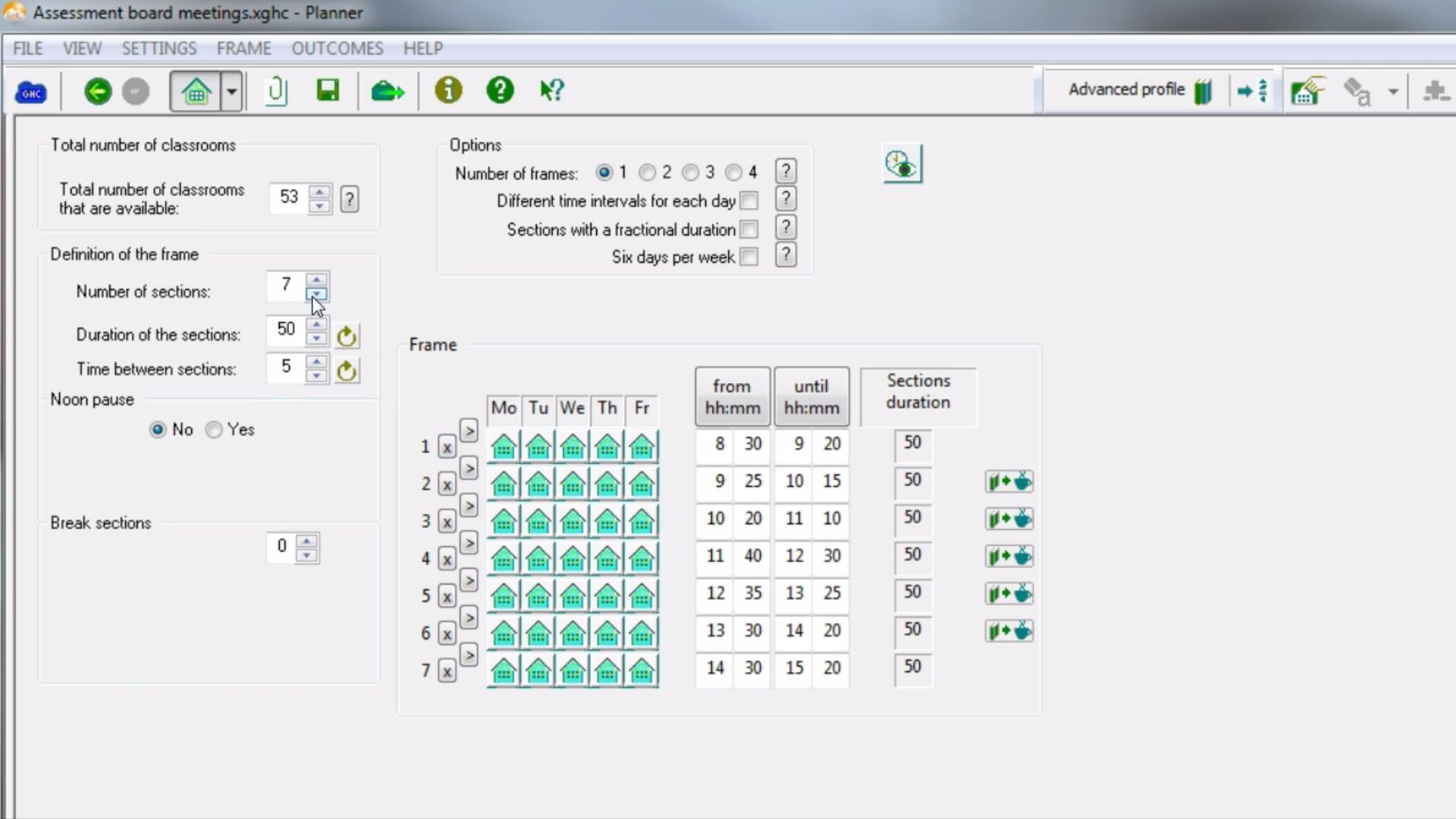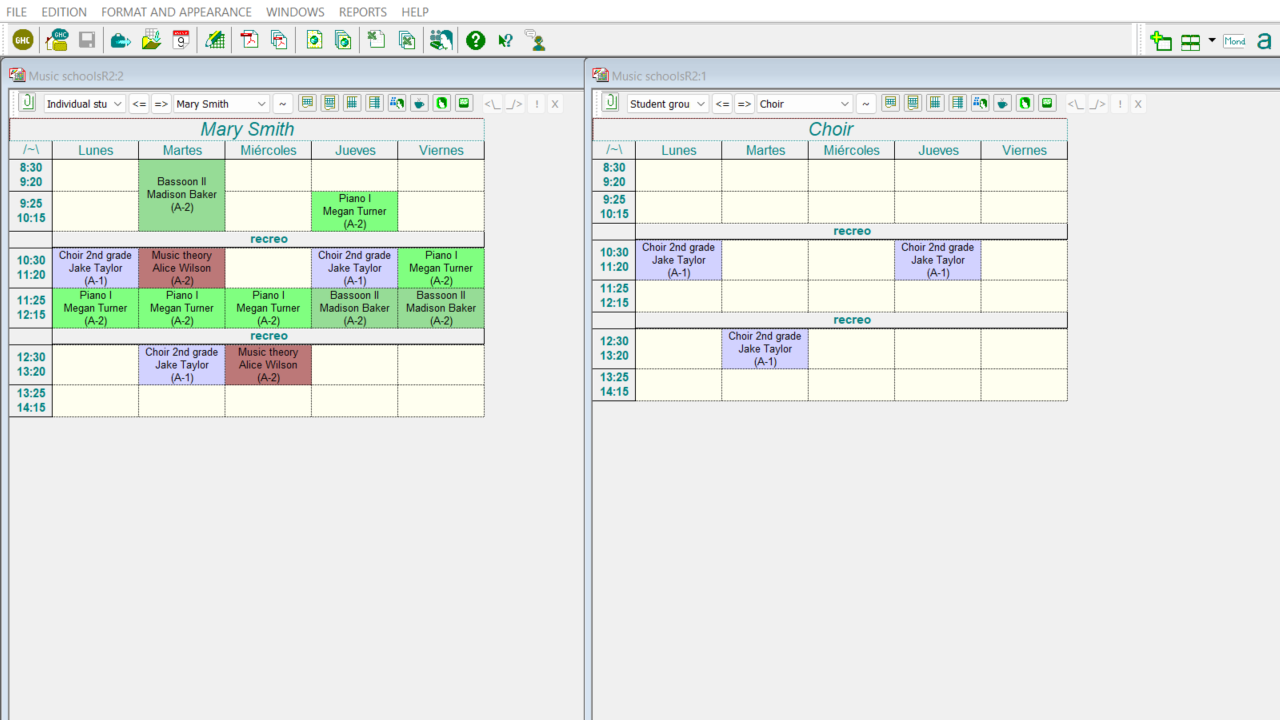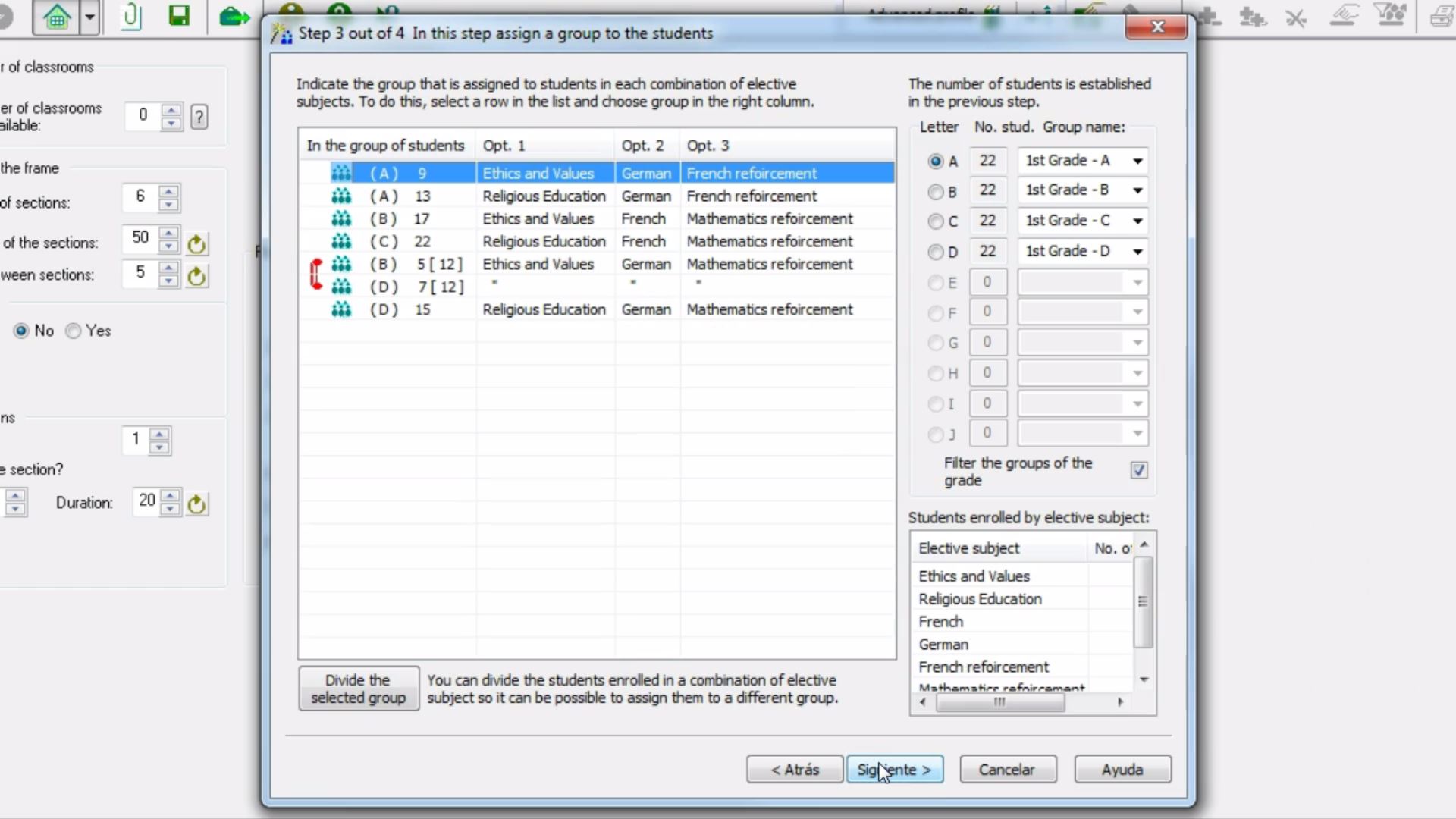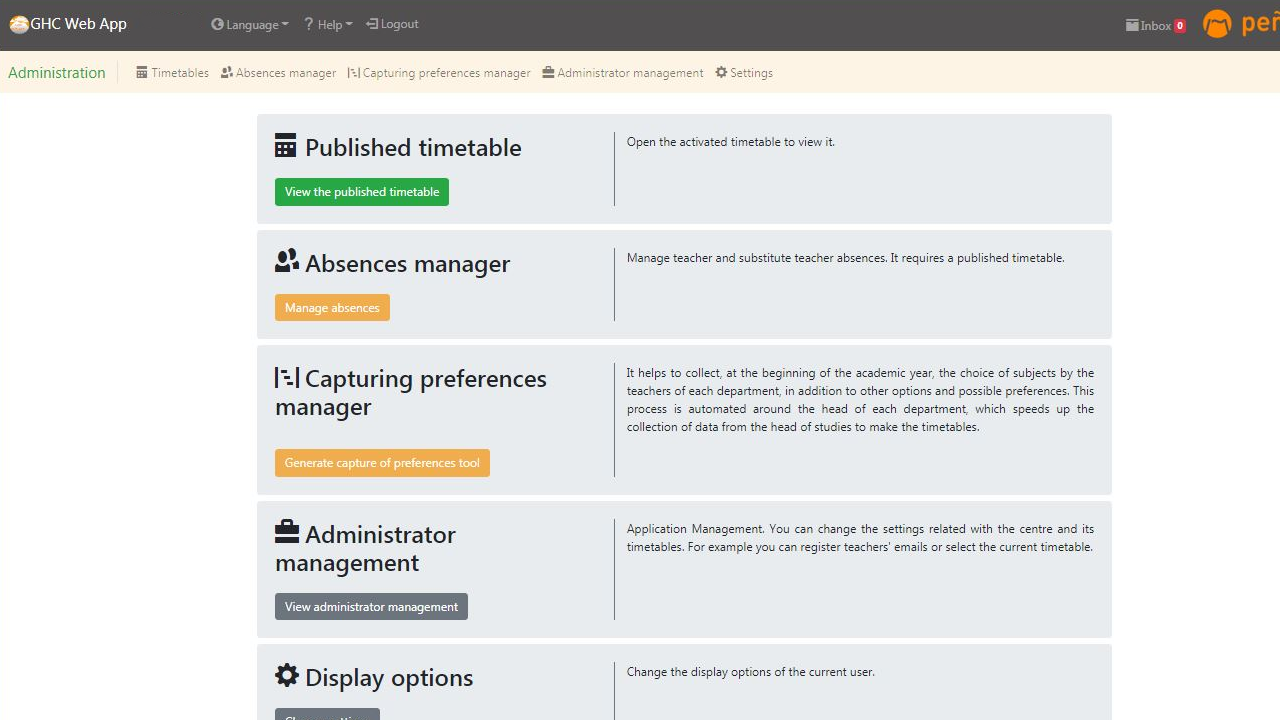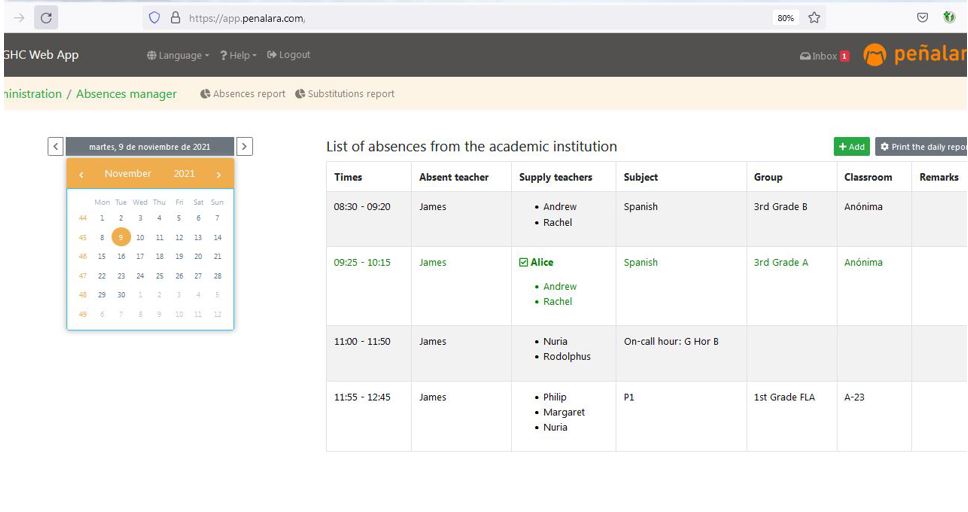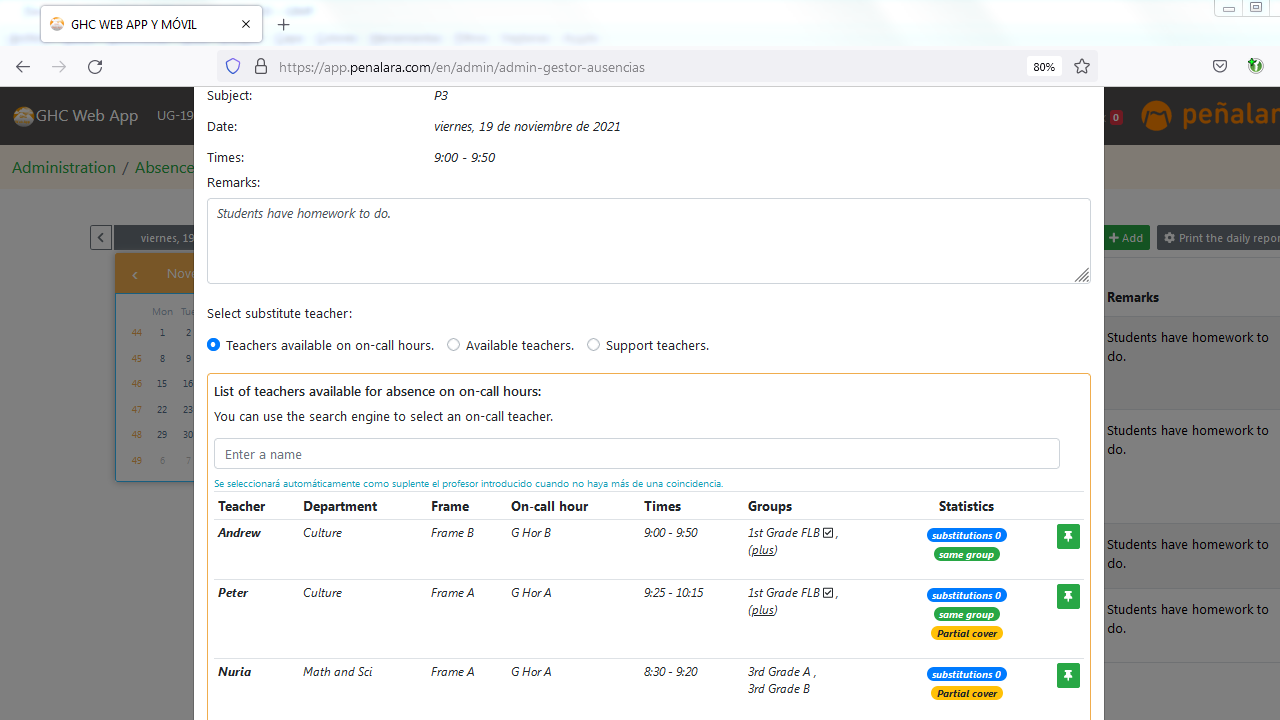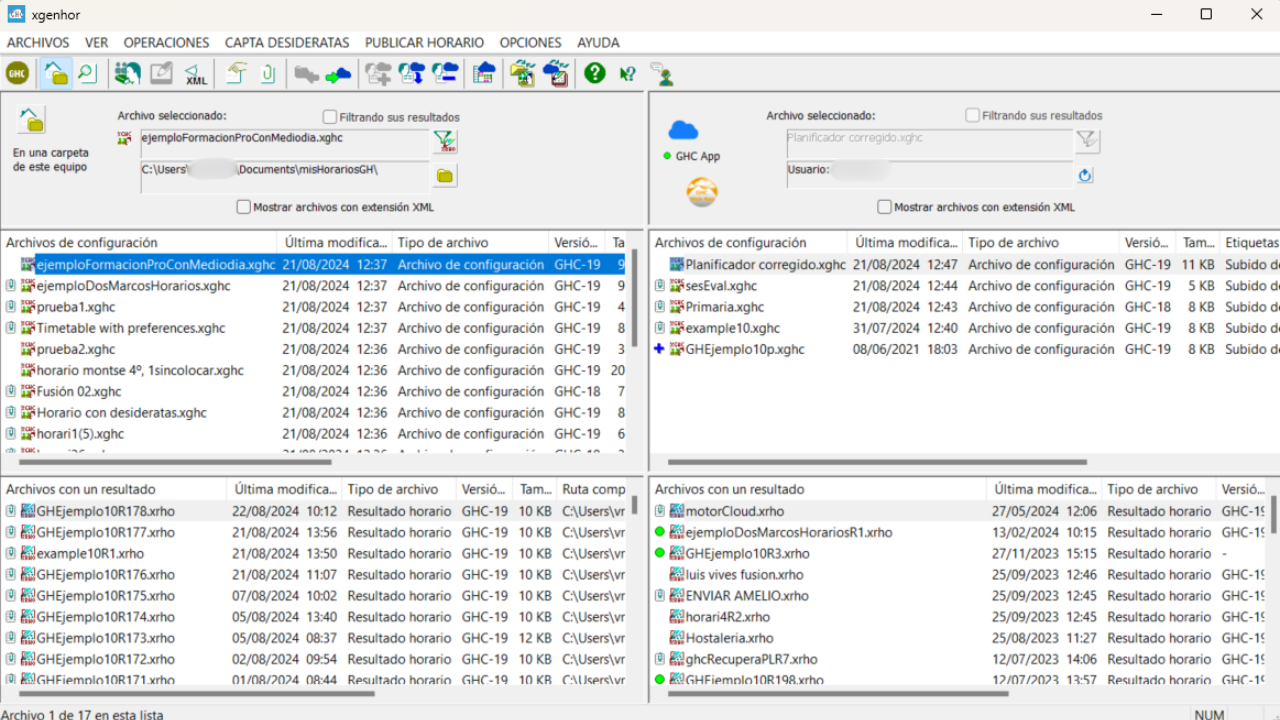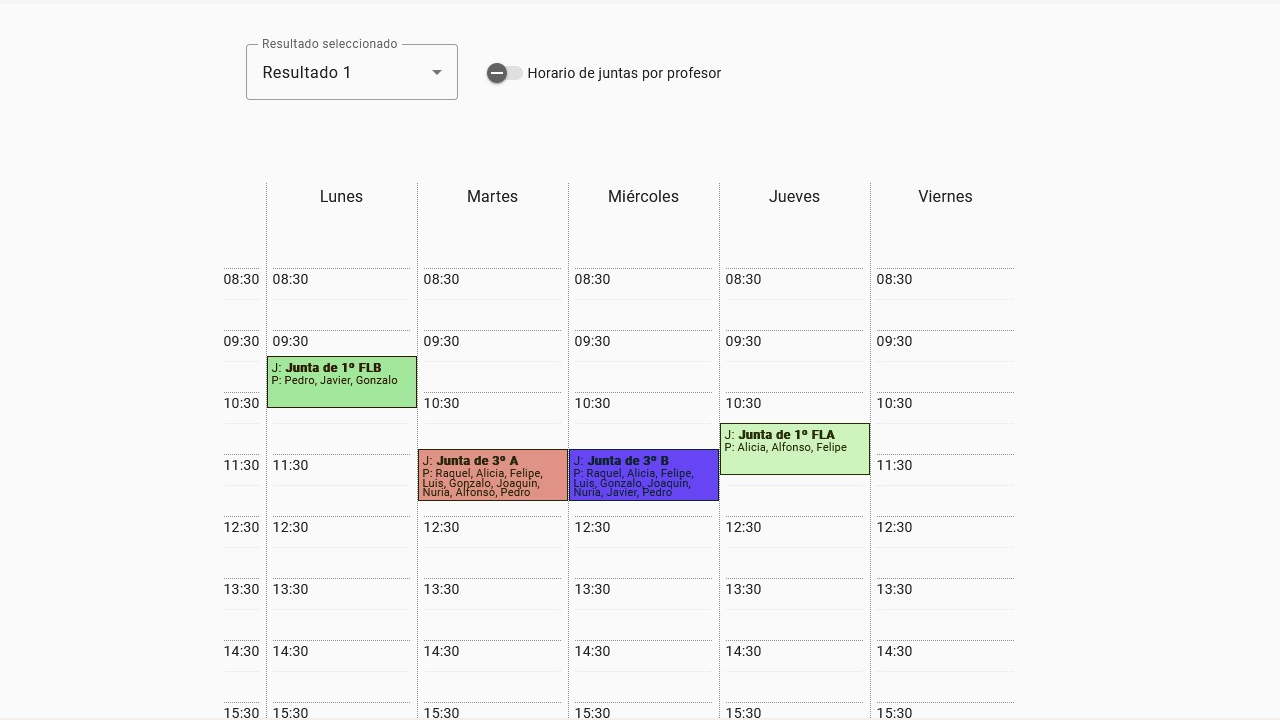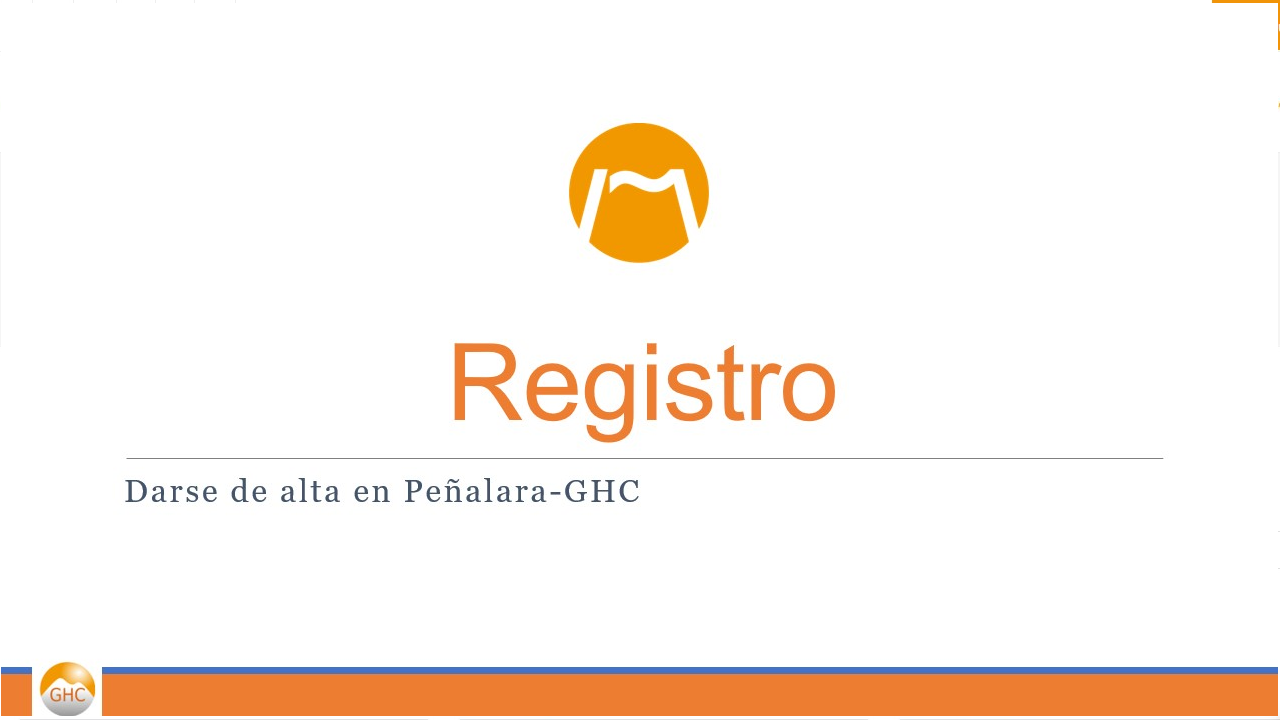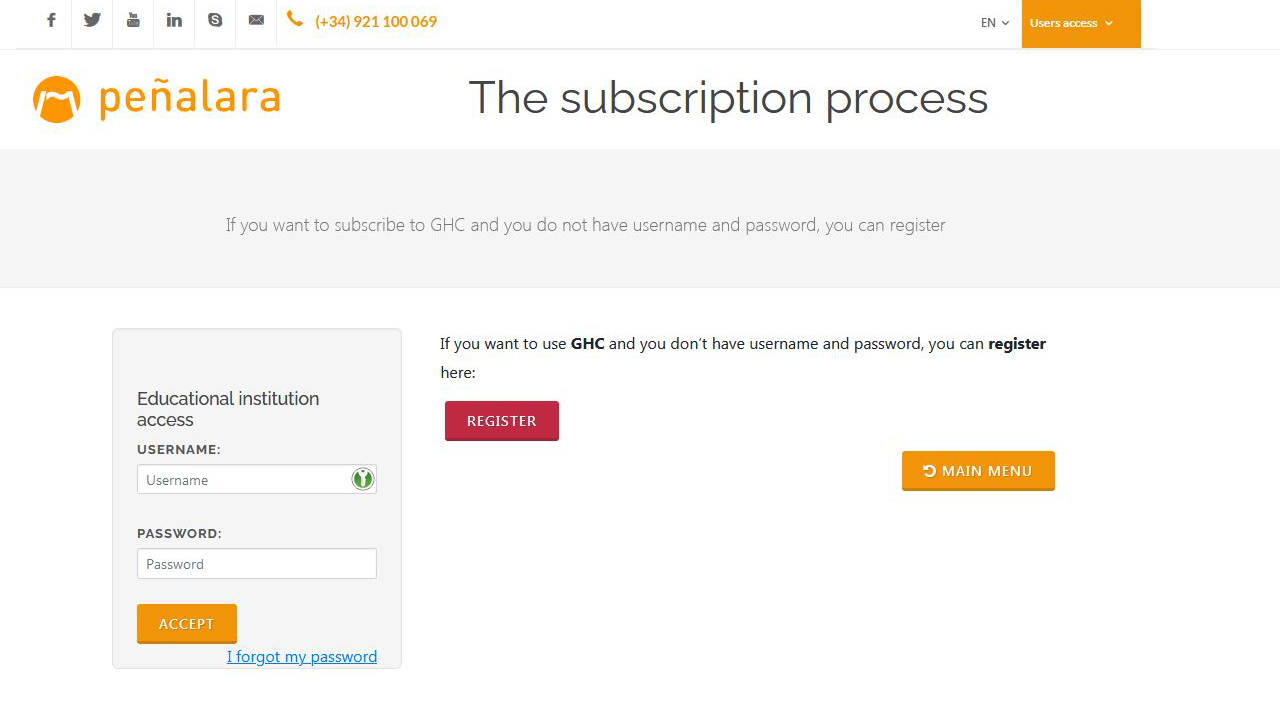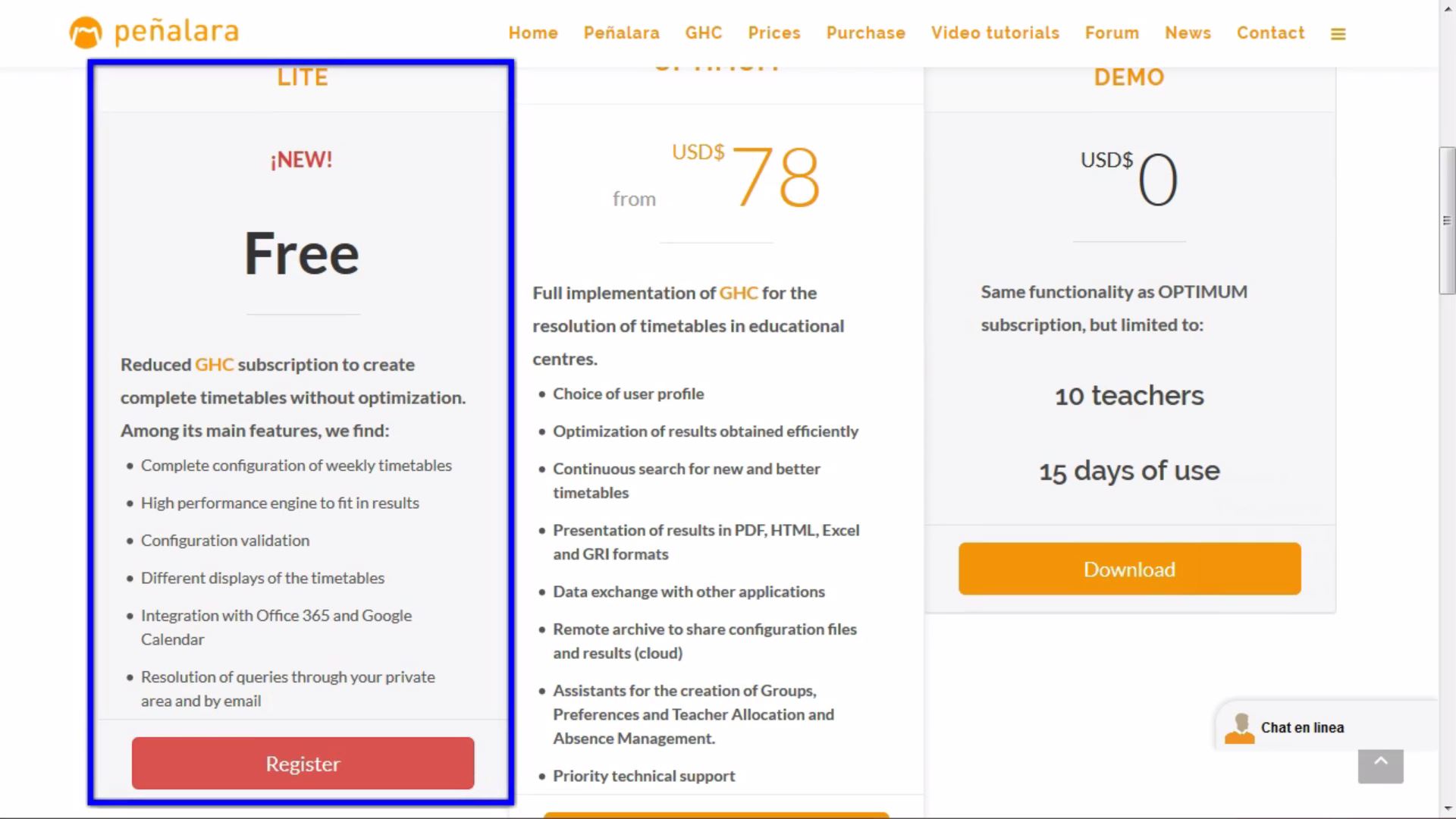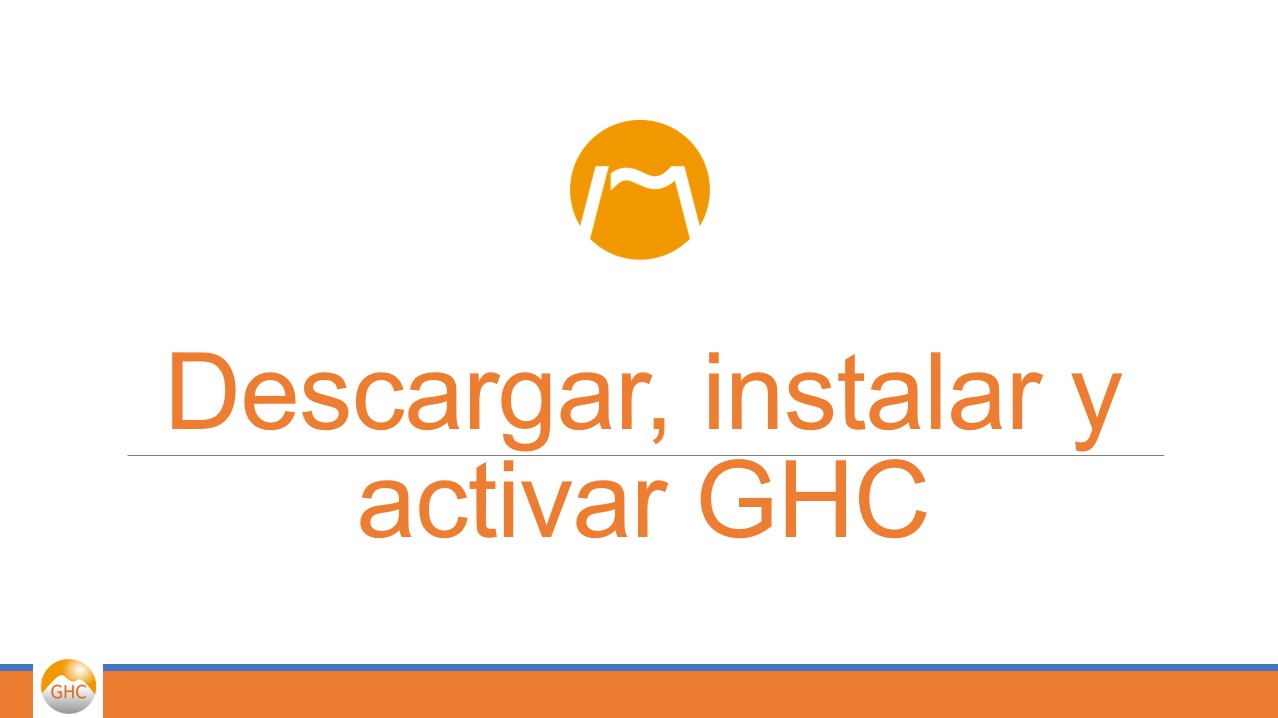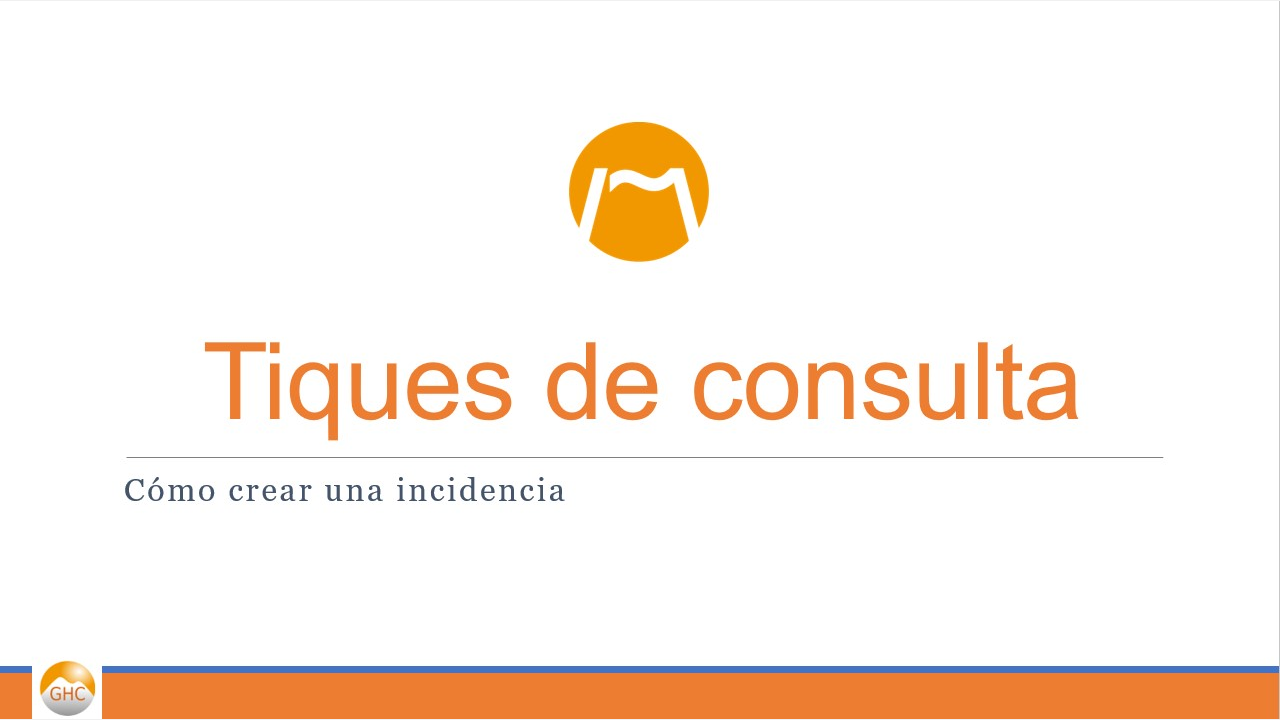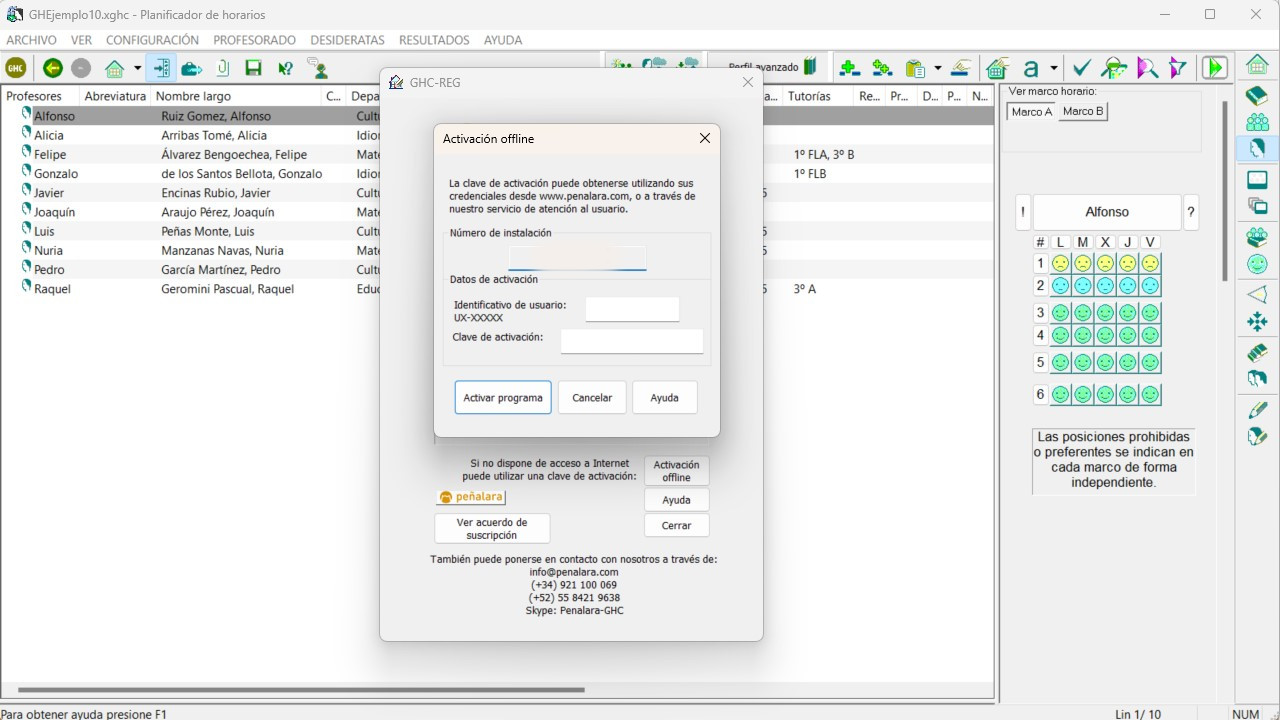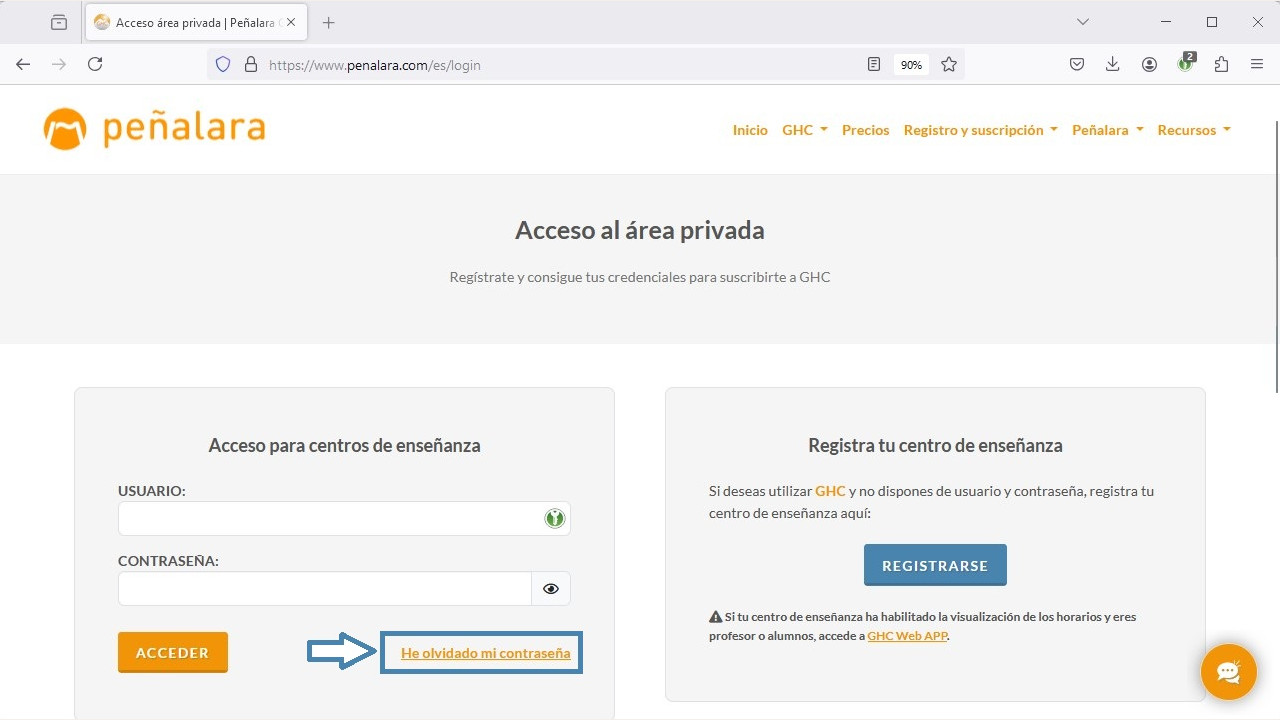- All
- Introduction
- Learning videos
- Auxiliary tools
- License purchase
- Operational functions
1. Introduction to GHC, the timetable software for schools
(v2)
3min 42s
GHC is suitable for any educational institution where weekly academic timetables are required.
This video tutorial shows the basic operation of GHC through its three components: the planner, the engine and the editor.
2. Preliminary considerations to use GHC
(v3)
2min 49s
It provides information on issues that should be considered before starting to use GHC.
It details the operating environment of GHC and its potential uses. In this video tutorial we will list those complements that will allow you to extract more efficient use from the complete application.
3. Using the help
(v4)
1min 48s
It shows the use of context help from GHC.
The best way to get further information about GCH is the use of the context help in the screens you are watching at that moment.
4. First steps with GHC
(v5)
5min 02s
It displays the creation of a very simple timetable.
You will see how a simple timetable is created, setting the timeframe, subjects, groups, teachers, classrooms and class units. The engine will resolve the timetable, and will be presented in the editor.
6. Timetable framework setting
(v11)
3min 58s
The video explains how to define the timetable framework.
You can see how to define a timetable with several breaks or a midday stop. It also details whether multiple frames, a different timetable for each day, or that sections have different duration, are needed.
7. Make different timetables each week
(v26)
2min 18s
GHC offers the possibility of configuring different weekly timetables. This allows, for example, to organize four-monthly timetables, two timetables in alternate weeks, or to plan an academic year of up to six weeks with different weekly contents.
The video details how to configure several weeks indicating those in which the different subjects are taught, for instance, the option to maintain the same position in the timetable, etc.
8. How to set up classrooms
(v12)
4min 03s
This video shows the adjustment possibilities of the classroom to find optimal results.
It explains what the specific classrooms, anonymous classrooms and set of classrooms are. Moreover, the video presents those optimization criteria that are related to the classroom and the possible changes in classroom from the editor.
9. How to add class units
(v13)
5min 35s
This video tutorial shows how to insert and manage class units.
The class units are the main elements that must fit to solve the timetable. This video displays how to create and edit these entities, how to configure them to be simultaneous among them, and how to use selectors and filters.
10. Properties of the class units
(v14)
5min 24s
Other optional conditions for class units are detailed.
This video reveals how to configure the class units to meet certain hard and soft conditions. For example, that they are taught in consecutive or not consecutive days, on different days, or they have a changeable weekly distributions.
11. How to set up the teachers’ options
(v15)
5min 03s
The video describes the attributes and characteristics of teachers.
You can set up different options in the teachers’ list, such as free periods, the balance of the daily workload, or the timetable compression. These conditions should be observed strictly or weighted to obtain best timetables.
12. Non-class units
(v16)
4min 31s
It explains what they are and how non-class units are configured in GHC.
Non-teaching class units are teachers' meetings, on-call hours (which may take place during school hours or breaks) and other complementary activities.
13. Working with subgroups
(v31)
6min 02s
A subgroup is a group of students that can belong to one or several groups.
Depending on the academic management application you are working with, it will be necessary to use subgroups to facilitate the process of exchanging configuration data and the timetable resolved. But it is important to use it only if your academic manager supports this feature, otherwise it may cause failures in the exchange.
14. The engine
(v17)
6min 01s
This video shows how the engine works, and how to maximize the perks it offers.
The engine is a tool used to obtain timetables, and to achieve an optimization according to user-defined criteria.
15. Debugging impossible conditions
(v29)
3min 54s
The aim of these processes is to purify the conditions that prevent complete and optimal solutions.
GHC engine is very powerful and, if the solution exists, it will find it. The problem is that it is not always possible to know quickly if the solution exists and the conditions that may prevent the results.
16. Editor characteristics
(v18)
5min 15s
The video offers the general characteristics of the editor.
It shows the different perspectives of the timetable in windows and tabs, display options of the solution, the use of .gri files, and several print formats that can be used: pdf, html and excel.
17. Use of the editor
(v19)
5min 50s
This video tutorial explains how to modify finished timetables with the editor.
It details some options that allow to modify a finished timetable ensuring its validation; move, create, modify or delete class units.
18. Result projection on the planner
(v20)
3min 12s
This video tutorial describes how to open and optionally project a result on the planner.
When you open a result in the planner, it will offer you the possibility to pre-set the position in which the class units were placed.
19. Assessment board meetings
(v25)
3min 48s
This video tutorial shows you how to create assessment board meetings for each group with their teachers, based on an existing timetable.
You will learn how to create assessment board meetings, how to limit the number of sections in which they can be held, and how to optimize the space of the meetings.
20. Music schools
(v32)
5min 16s
This video shows how to use GHC in order to create a timetable for music schools and for those educational institutions in general where individualised timetables are needed.
In music schools, both collective and individual subjects are taught, with the peculiarity that good timetables are needed for every student.
24. Groups’ assistant
(v8)
5min 39s
The groups’ assistant is an additional tool of GHC that can be used optionally to organize groups of students in each course.
This wizard allows to automatically generate all the class units of the groups that are part of each course. The divisions and unions of students of different groups will be created, where it is necessary to teach elective subjects.
27. GHC App Web and Mobile
(v27)
3min 11s
GHC offers the possibility to publish a file on GHC App Web and view it through the GHC Mobile App (iOS and Android).
It details how to access the application from the different profiles: administrator, teacher or student. You will also be able to see how to publish the timetable so that it is available in the mobile applications.
28. Absence manager teacher profile
(v28)
4min 54s
In this videotutorial we will show a practical case of using the absence manager module, within GHC App Web and GHC App Mobile, for the teacher's profile.
The management of absences and substitutions is a daily task to be performed by teachers and school management. This module allows a complete control of them, for their registration and visualization.
Finally, the possibility of registering absences from the mobile device provides great agility and time savings to the teaching staff, making the notification to the center instantaneous, and allowing to speed up the possible substitution of the absence.
29. Absence manager head of studies profile
(v30)
9min 11s
In this video tutorial we will show a practical case of using the absence management module, within GHC App Web and GHC App Mobile, for the profile of the head of studies.
The management of absences and substitutions is a daily task to be performed by teachers and school management. This module allows a complete control of them, for their registration and visualization.
It also yields a wealth of information about the teachers available to cover an absence, either because they are on call or because they are free during the time of the session to be covered. And it allows you to generate reports on absences and substitutions, both on a daily basis and between any two dates.
Finally, the possibility of registering absences from the mobile device provides great agility and time savings to the teaching staff, making the notification to the center instantaneous, and allowing to speed up the possible substitution of the absence.
30. File platform: general functionality
(v38)
3min 50s
In this video tutorial, you will learn how to use the GHC file platform.
The file platform is a cloud storage. The file platform is very simple to use and will allow you to store your GHC files as a backup, and share them with the rest of your colleagues.
31. Assessment board meetings
(v39)
2min 30s
In this video, you will learn how to create assessment boards. Assessment boards are critical for analyzing student performance and fostering continuous improvement.
However, coordinating these meetings, especially in multi-level and multi-area institutions, can be complicated. GHC makes it easier for you.
32. Registration process
(v33)
1min 06s
In this video, you will learn how to register your school as a new user on our website.
It is a quick and easy process that will take you no more than 5 minutes.
33. GHC subscription process
(v23)
1min 37s
In this video, we show you how to subscribe your school to GHC from our website.
34. Downloading, installing and activating GHC
(v34)
1min 09s
In this video, we show you how to download, install and activate GHC.
35. Creating enquiry or issue ticket
(v35)
2min 36s
In this video, you will learn how to create an enquiry or issue ticket from our website.
Tickets queries are the quickest way to get help with any questions you may have about your timetable.
